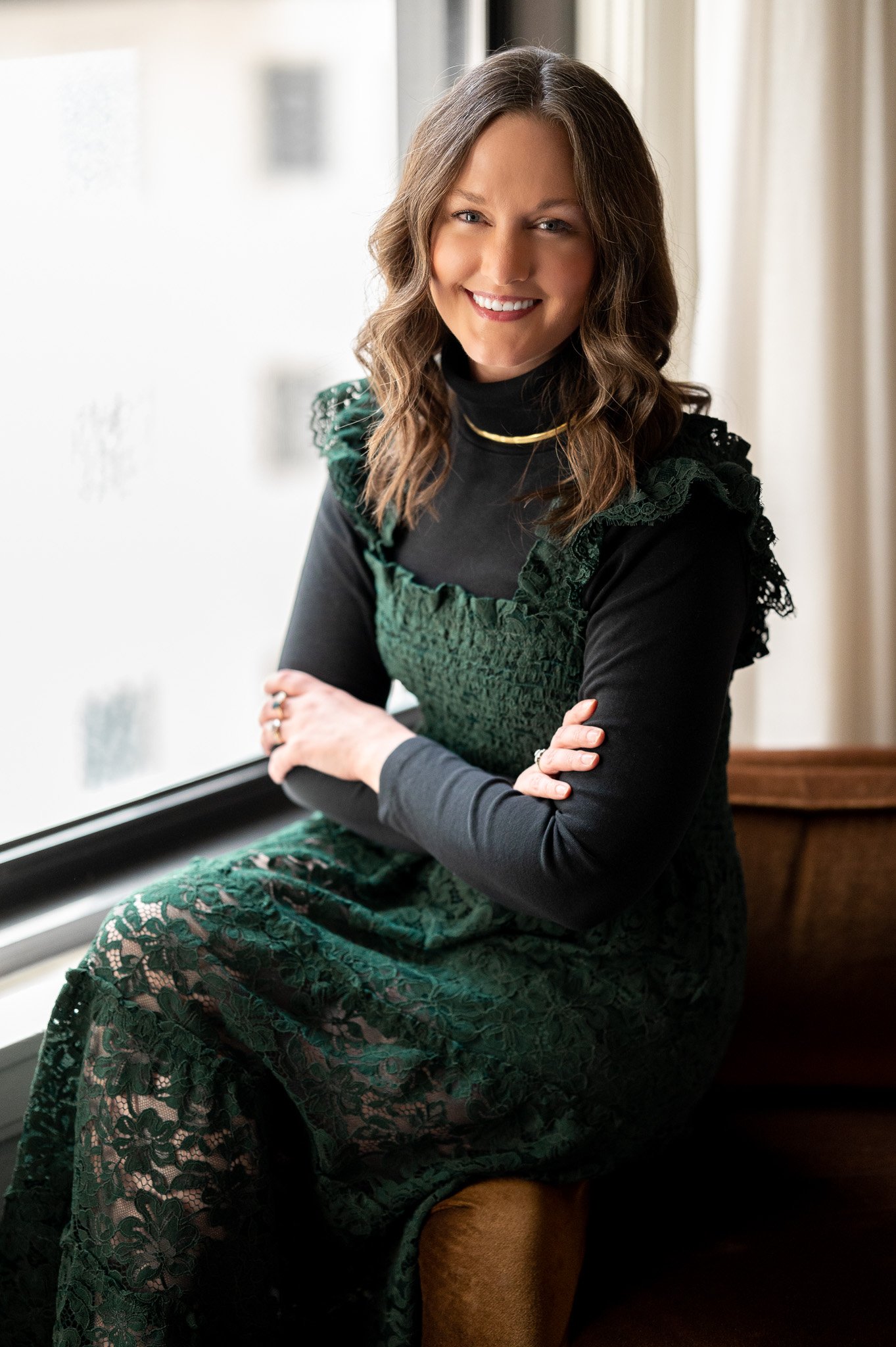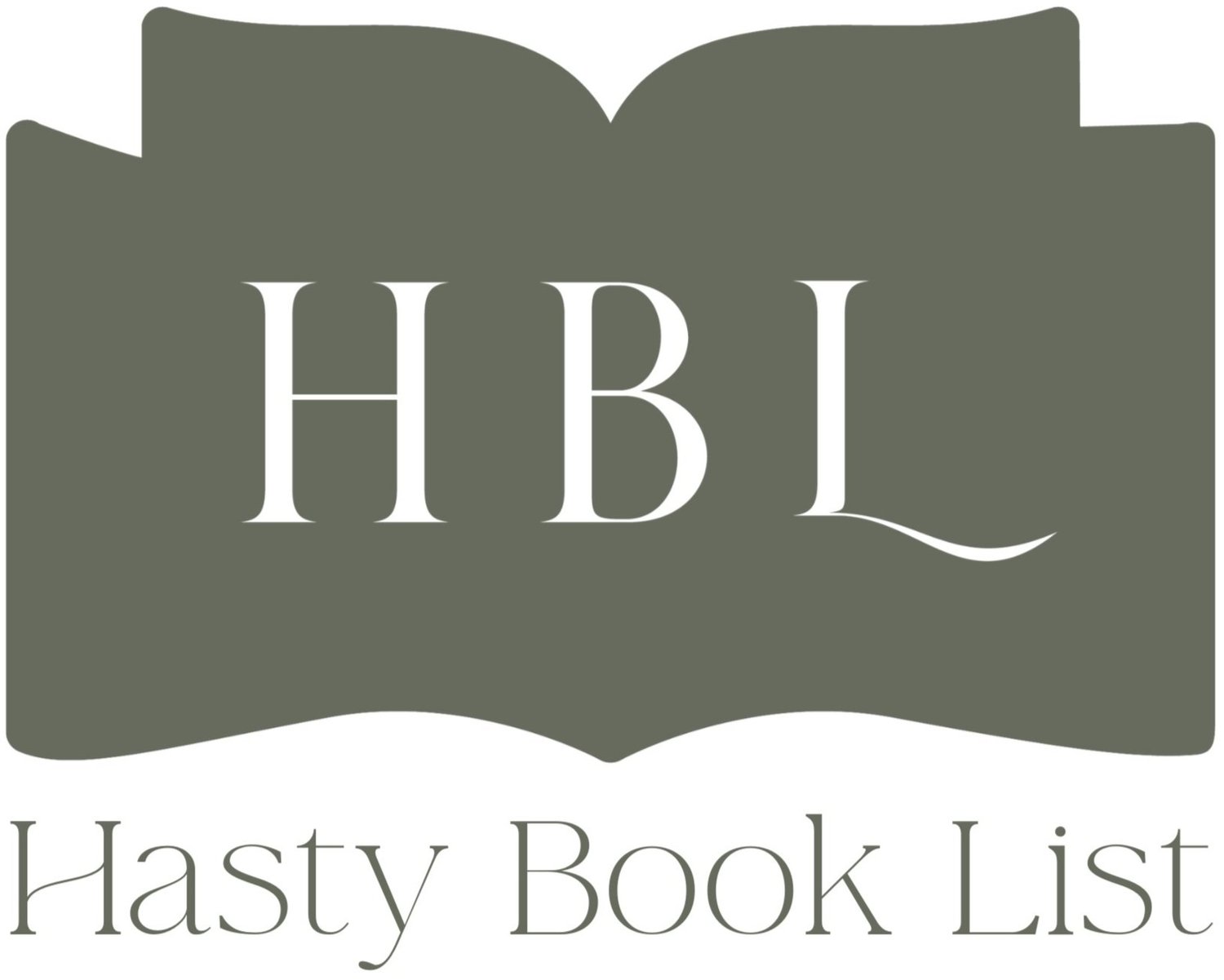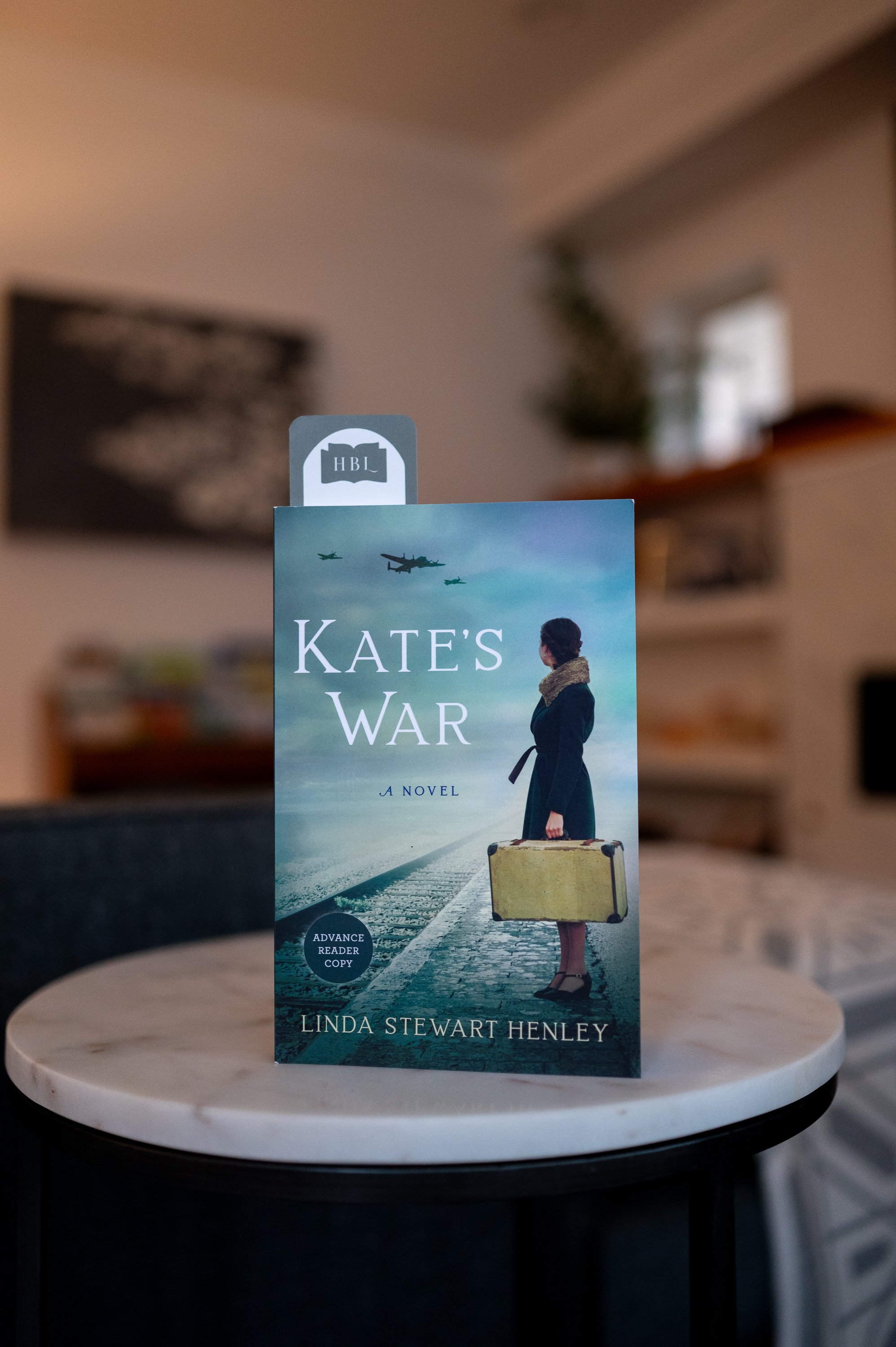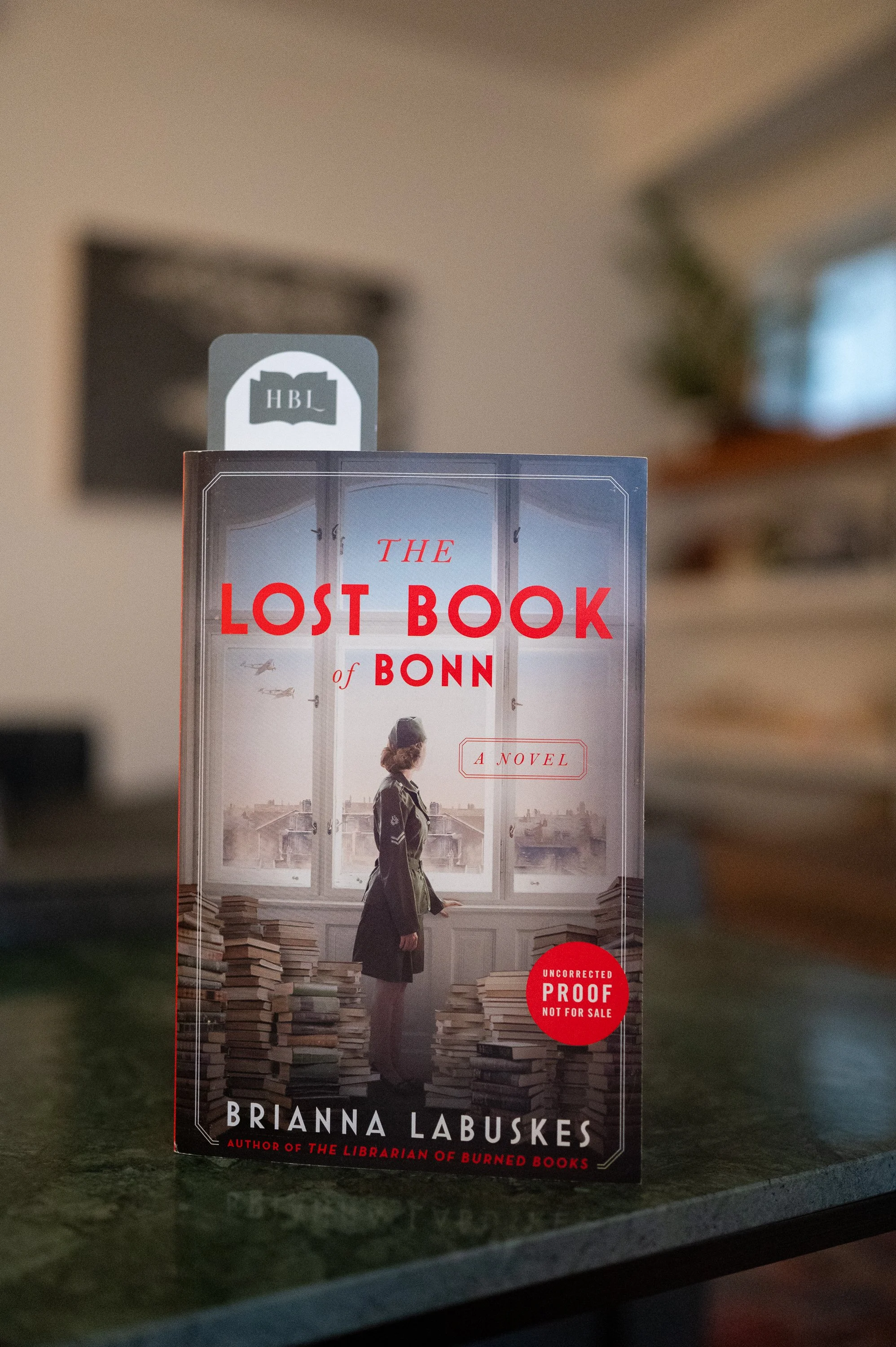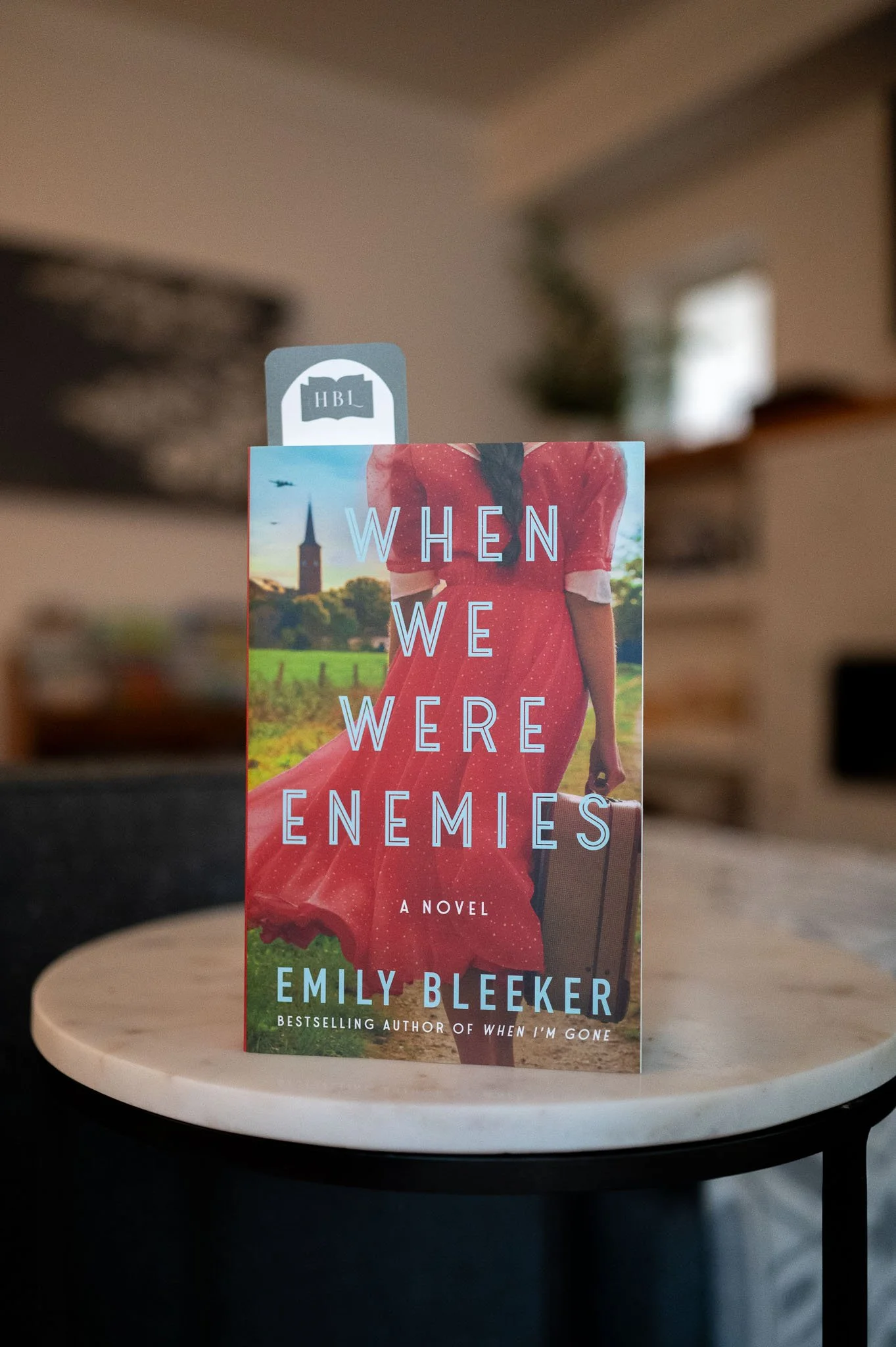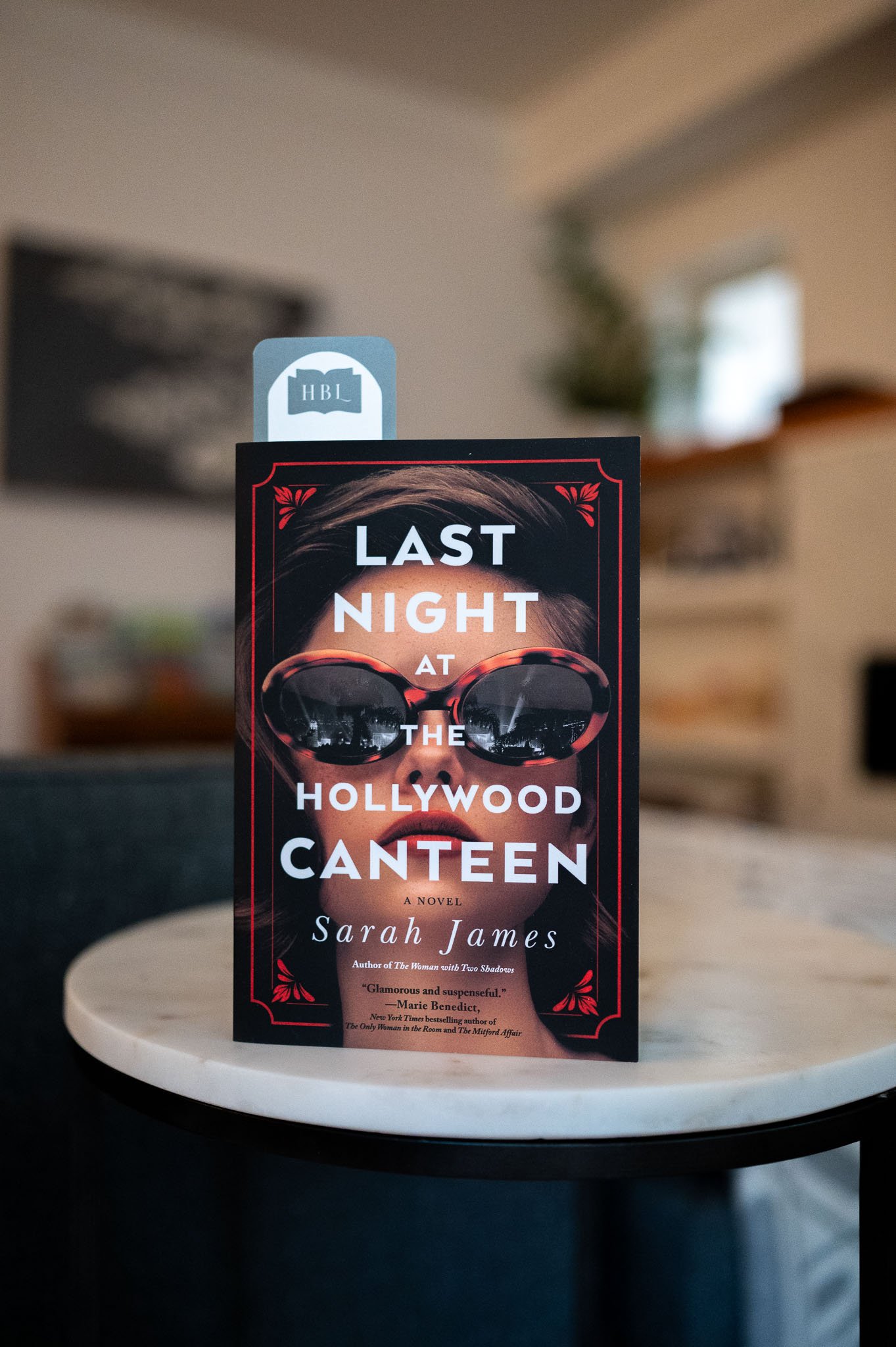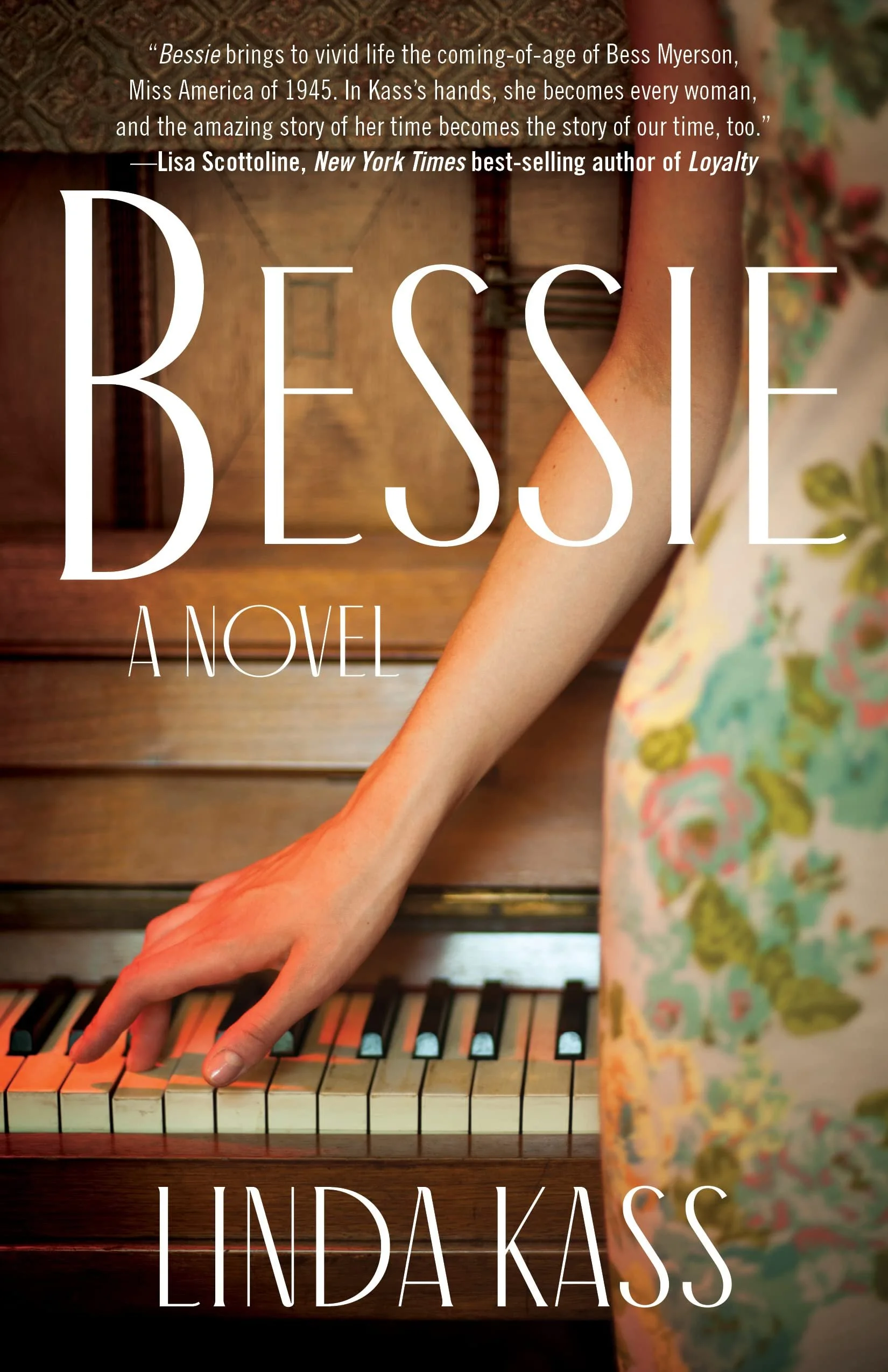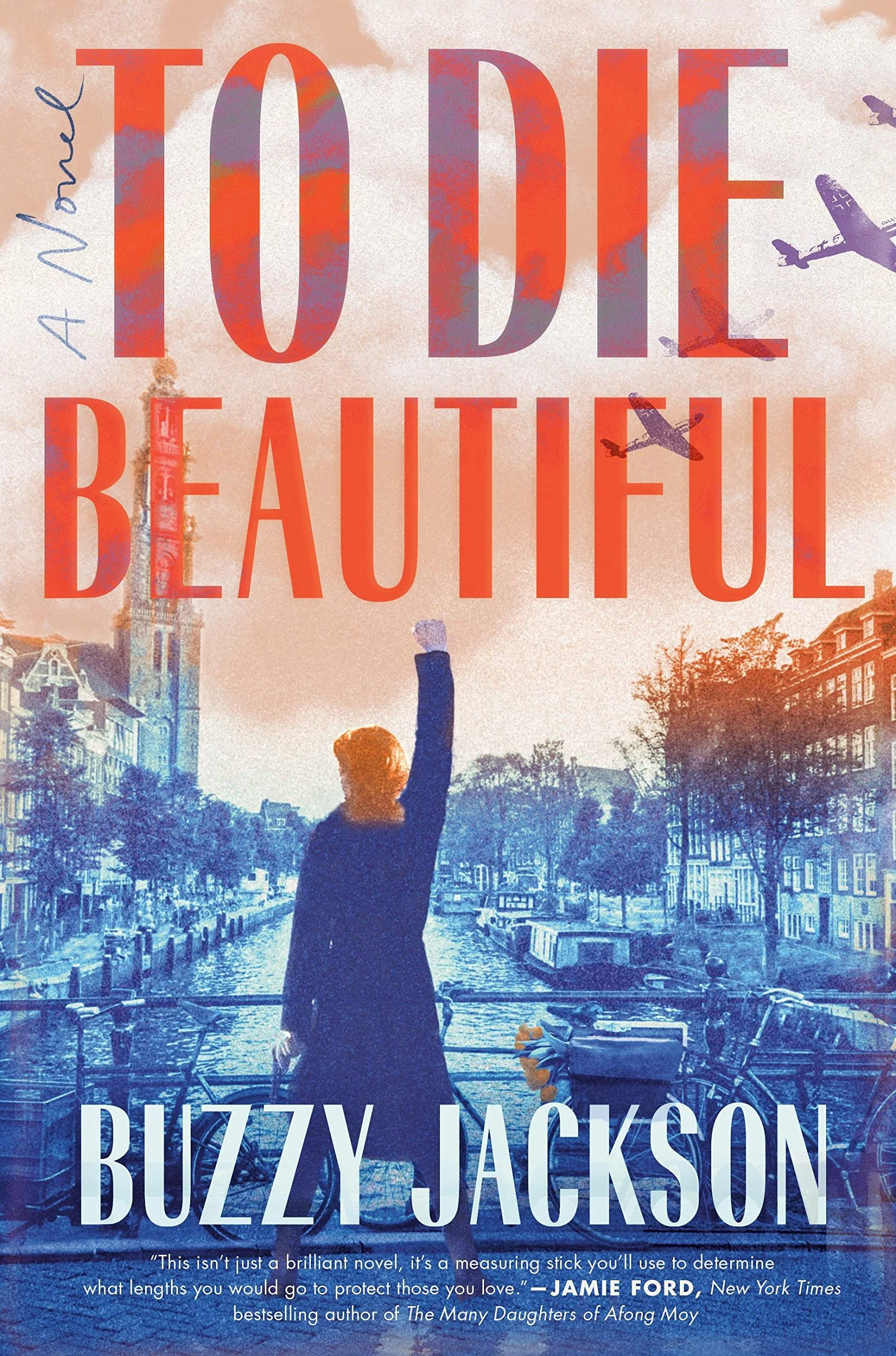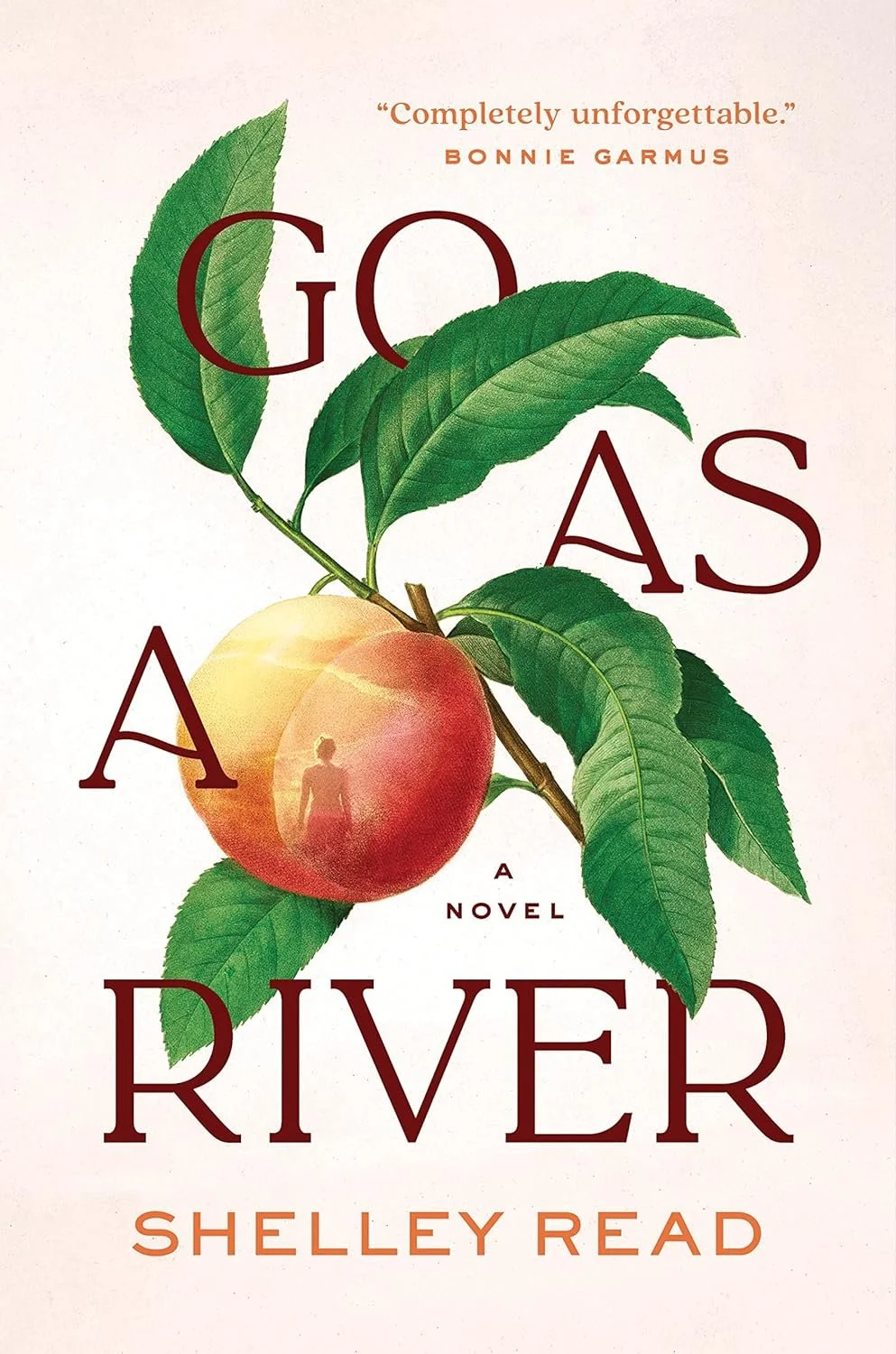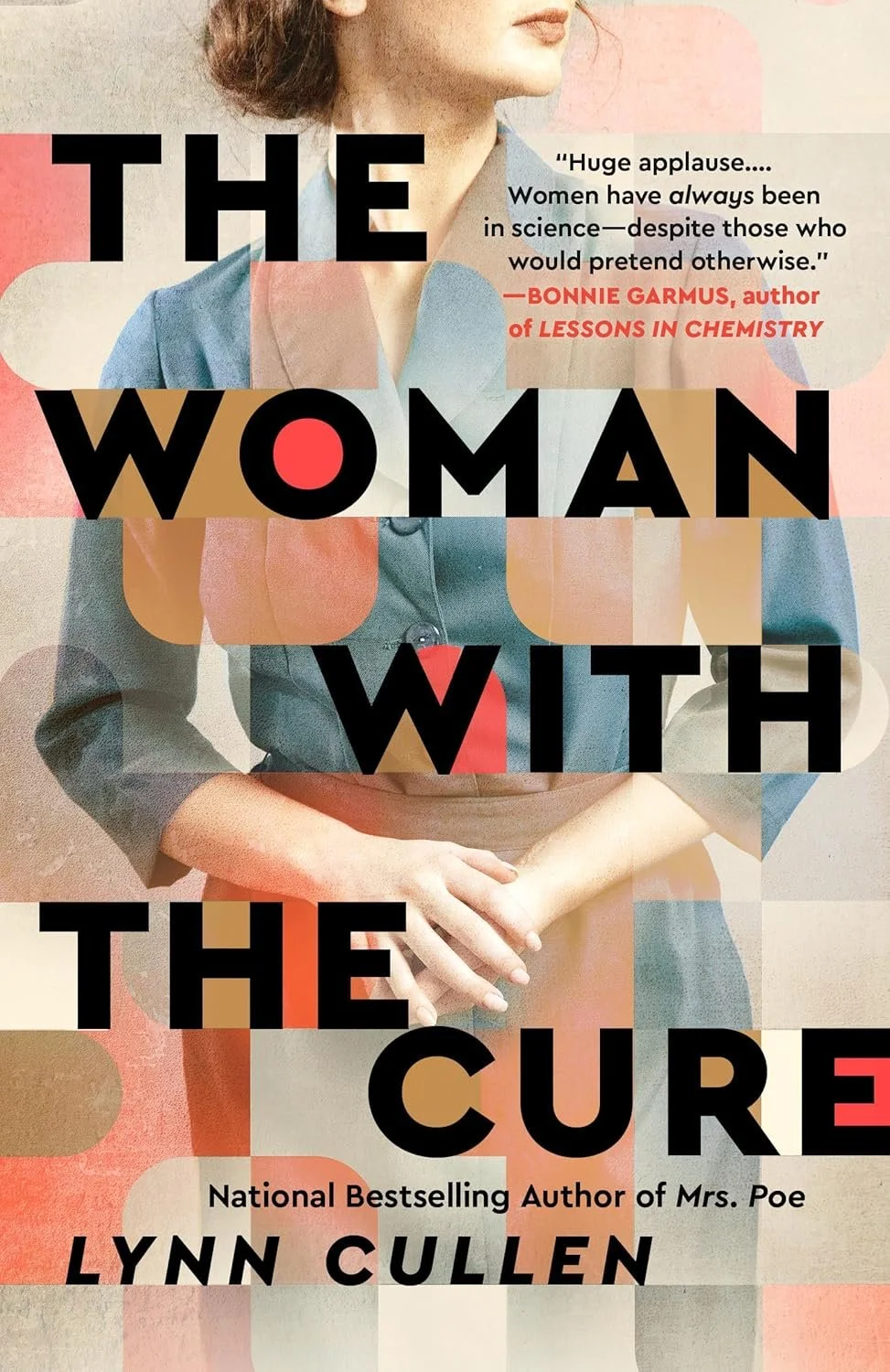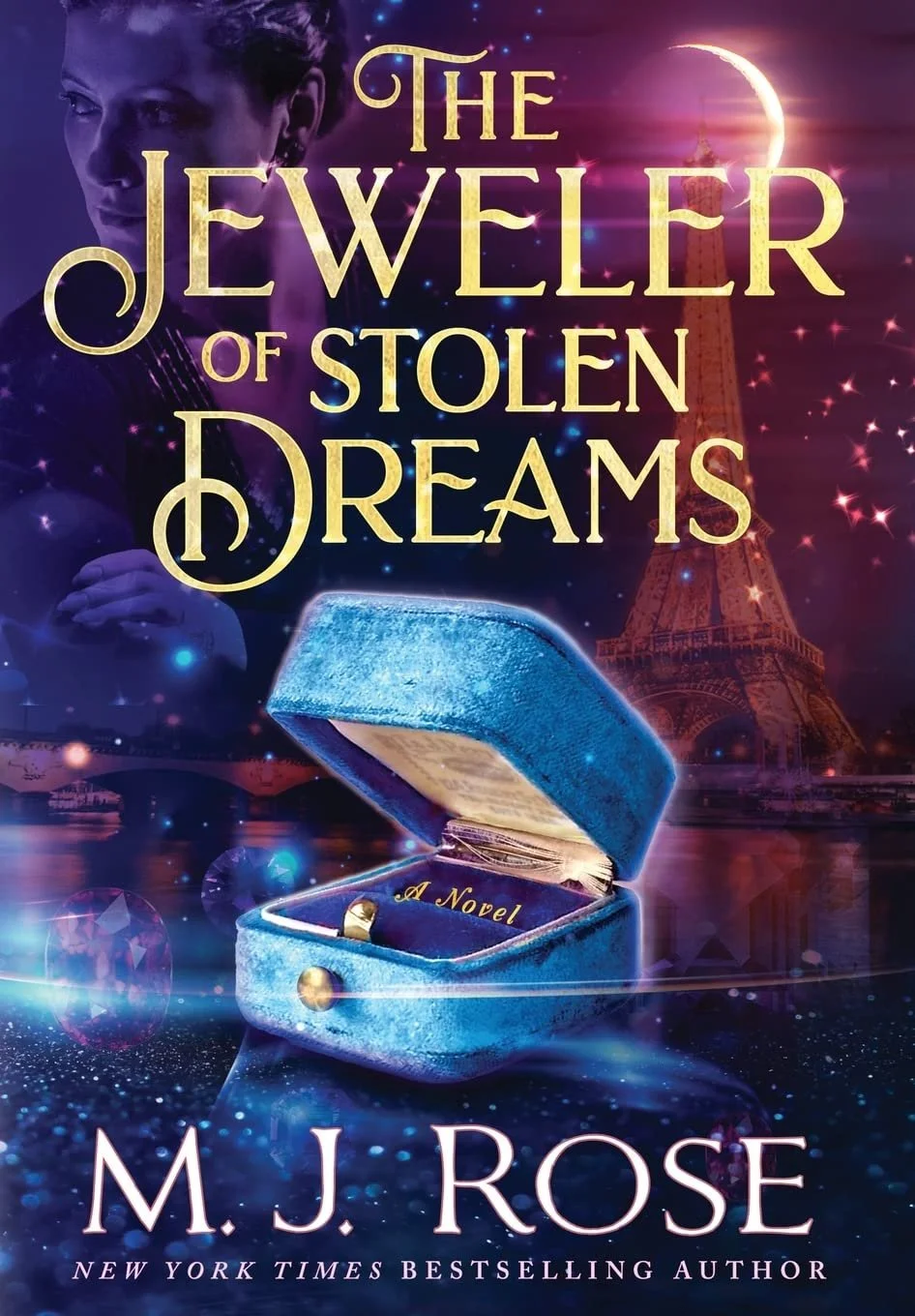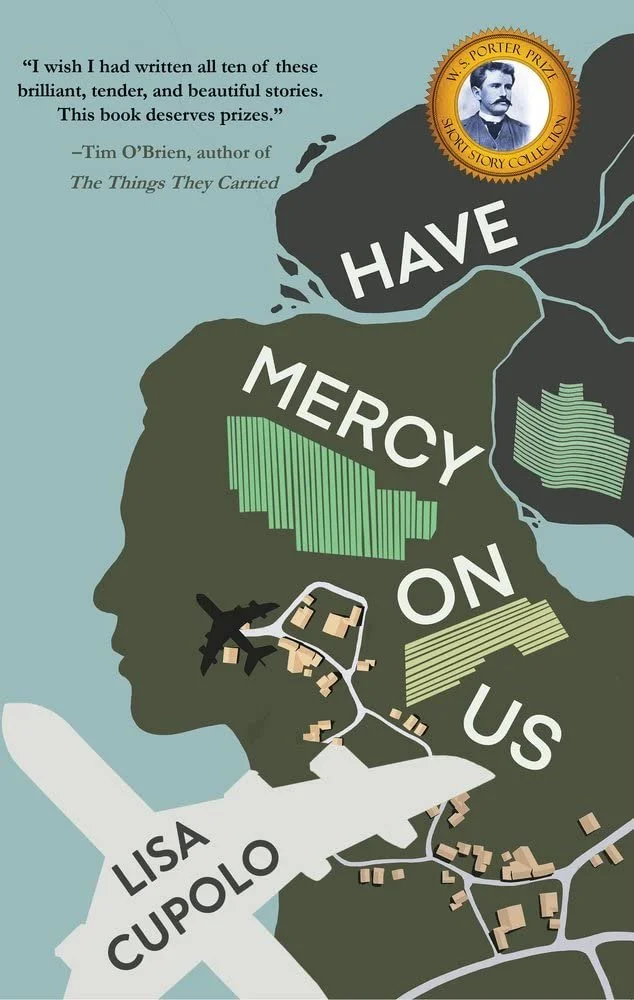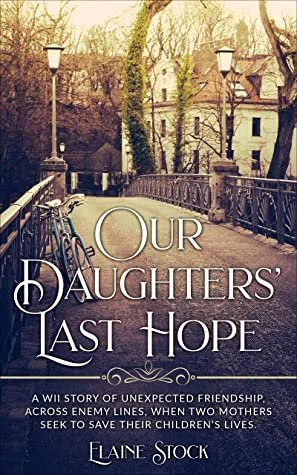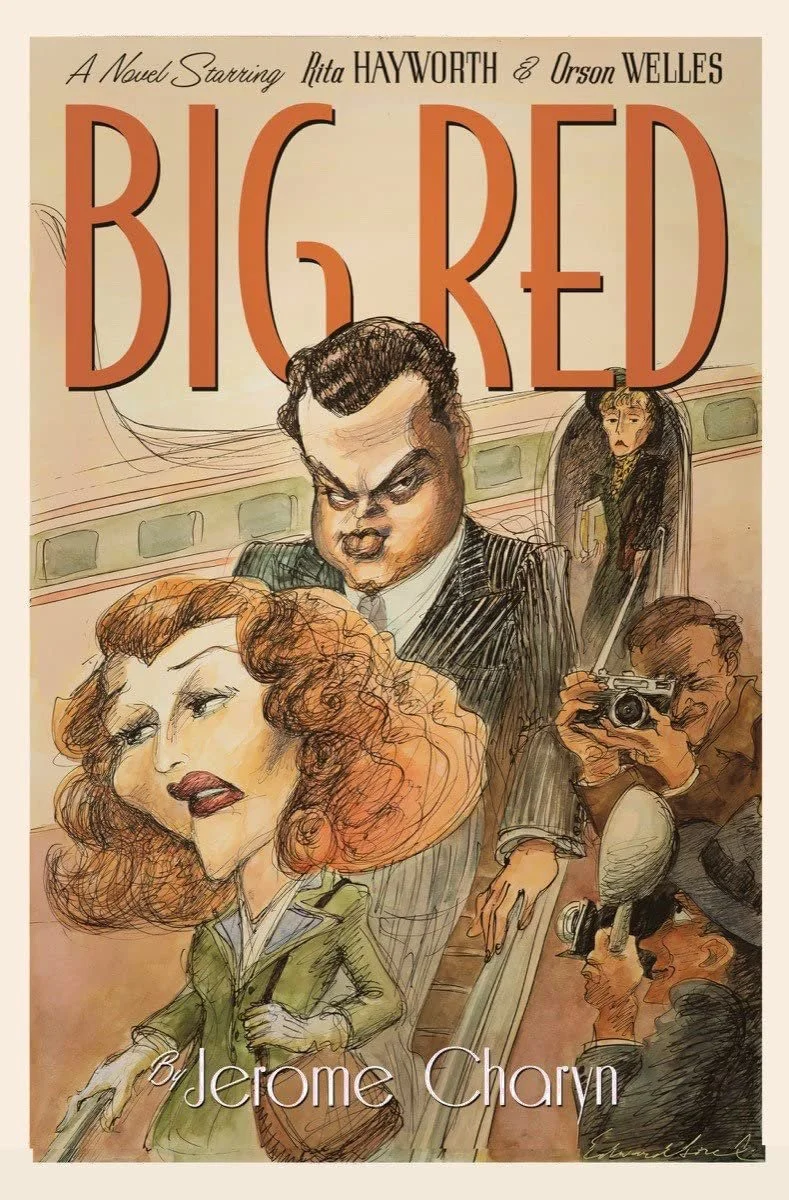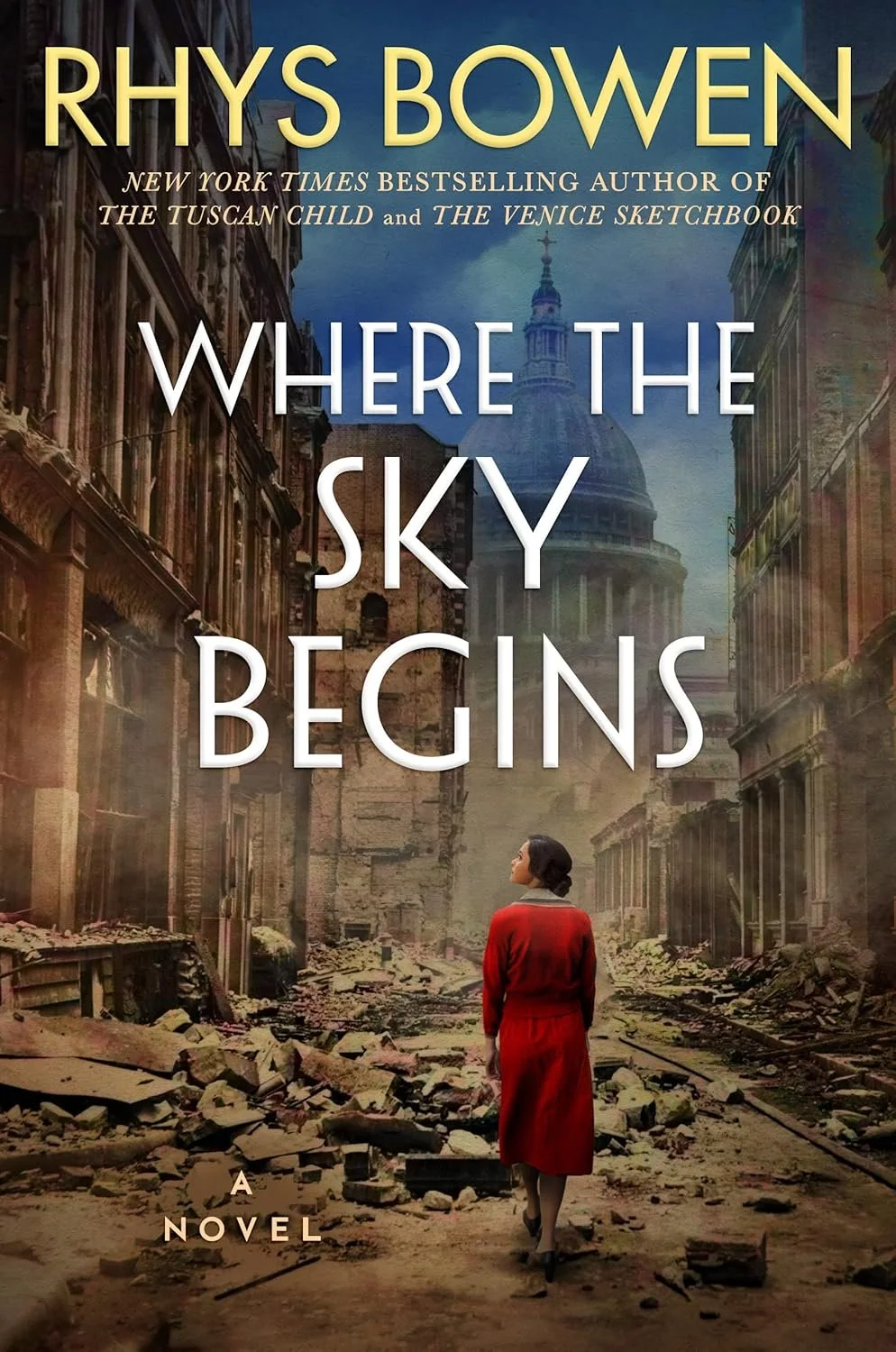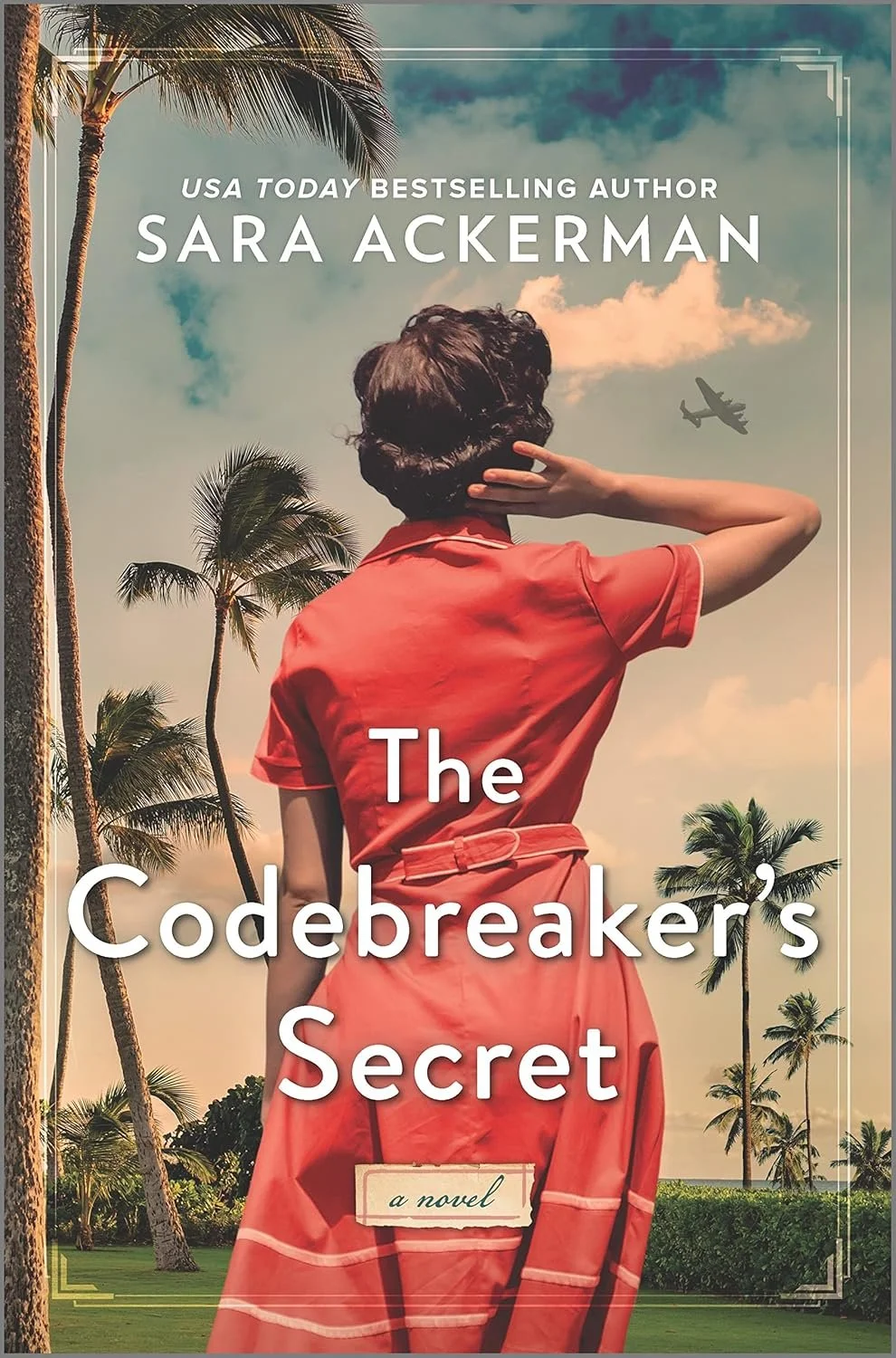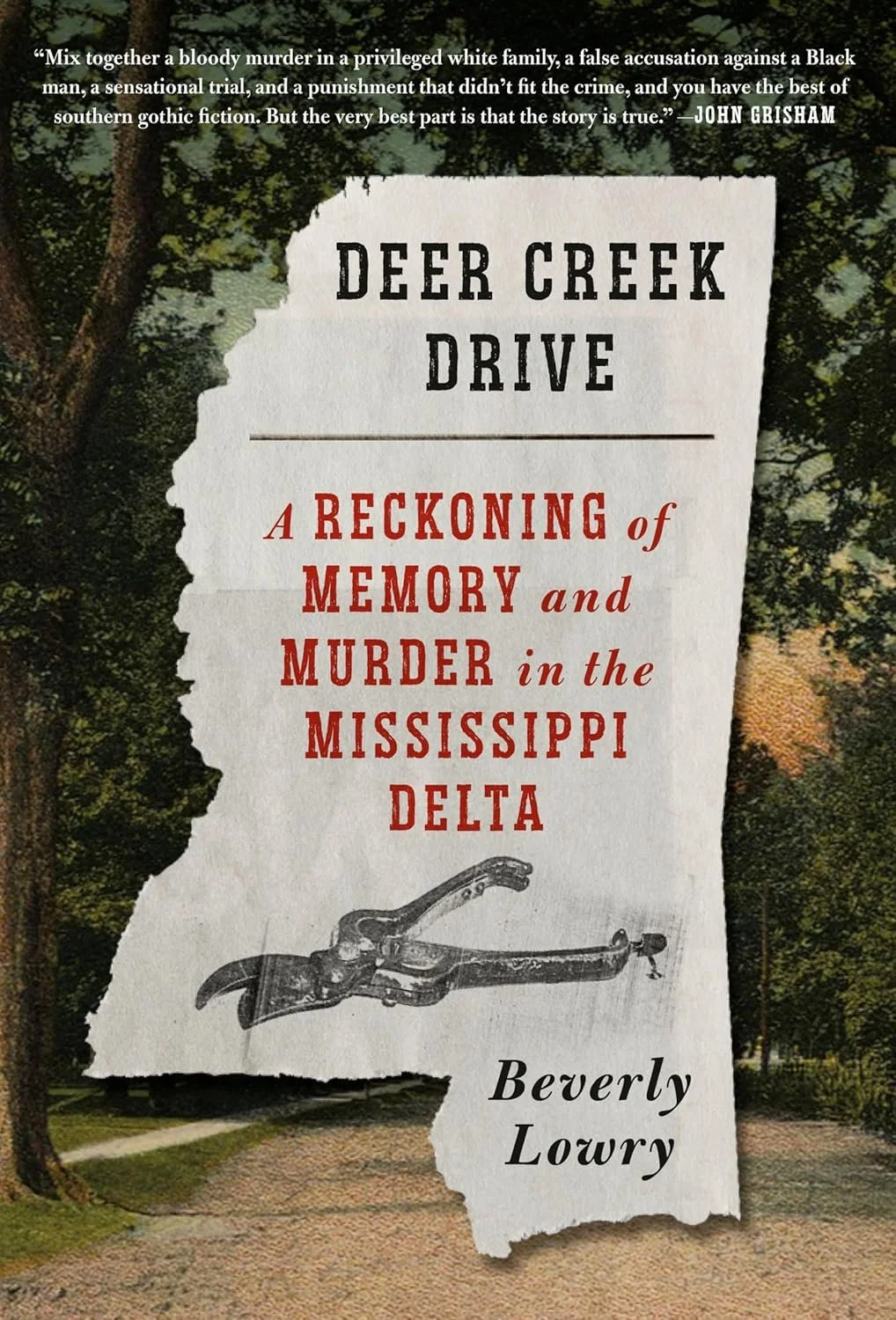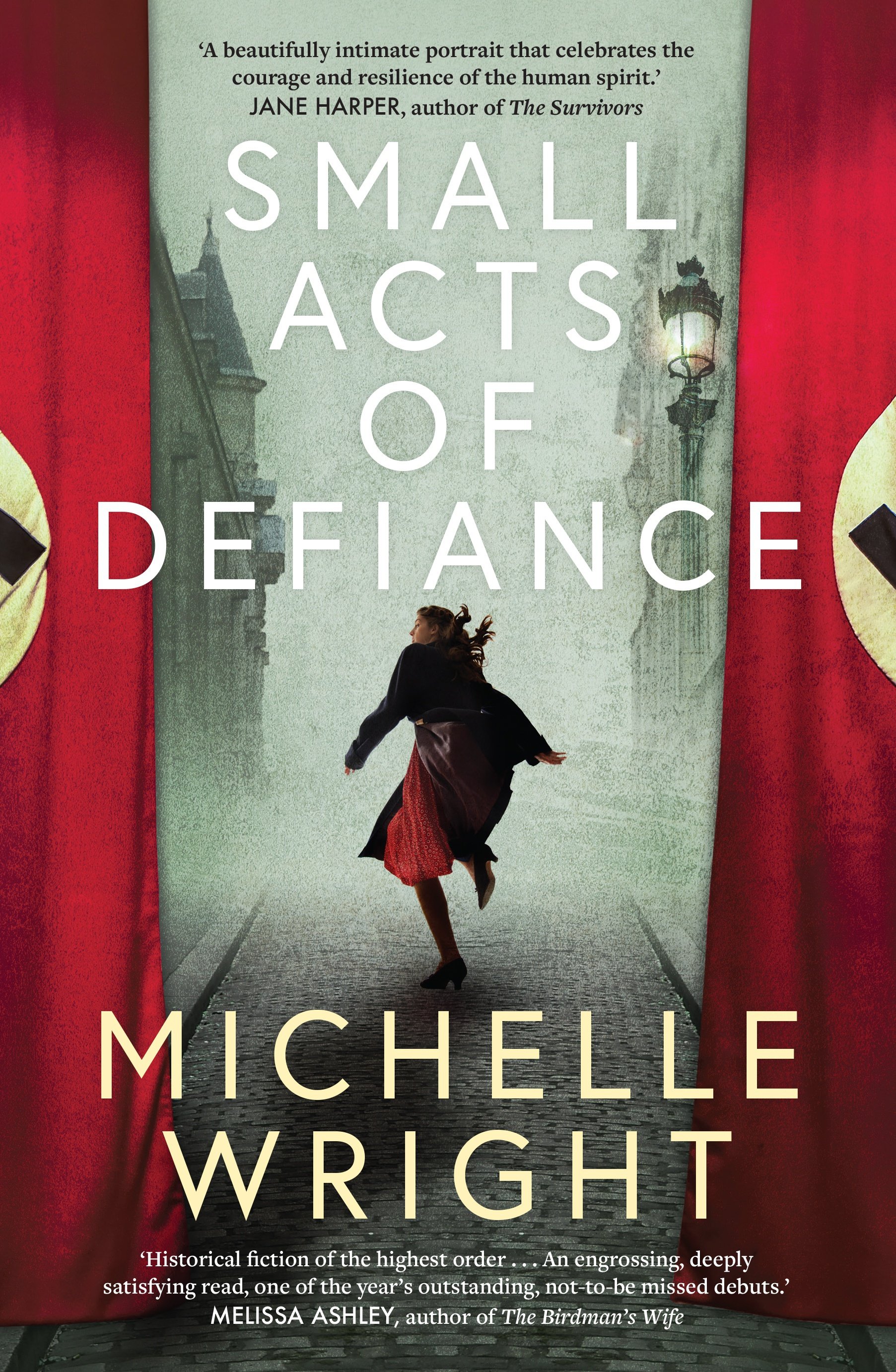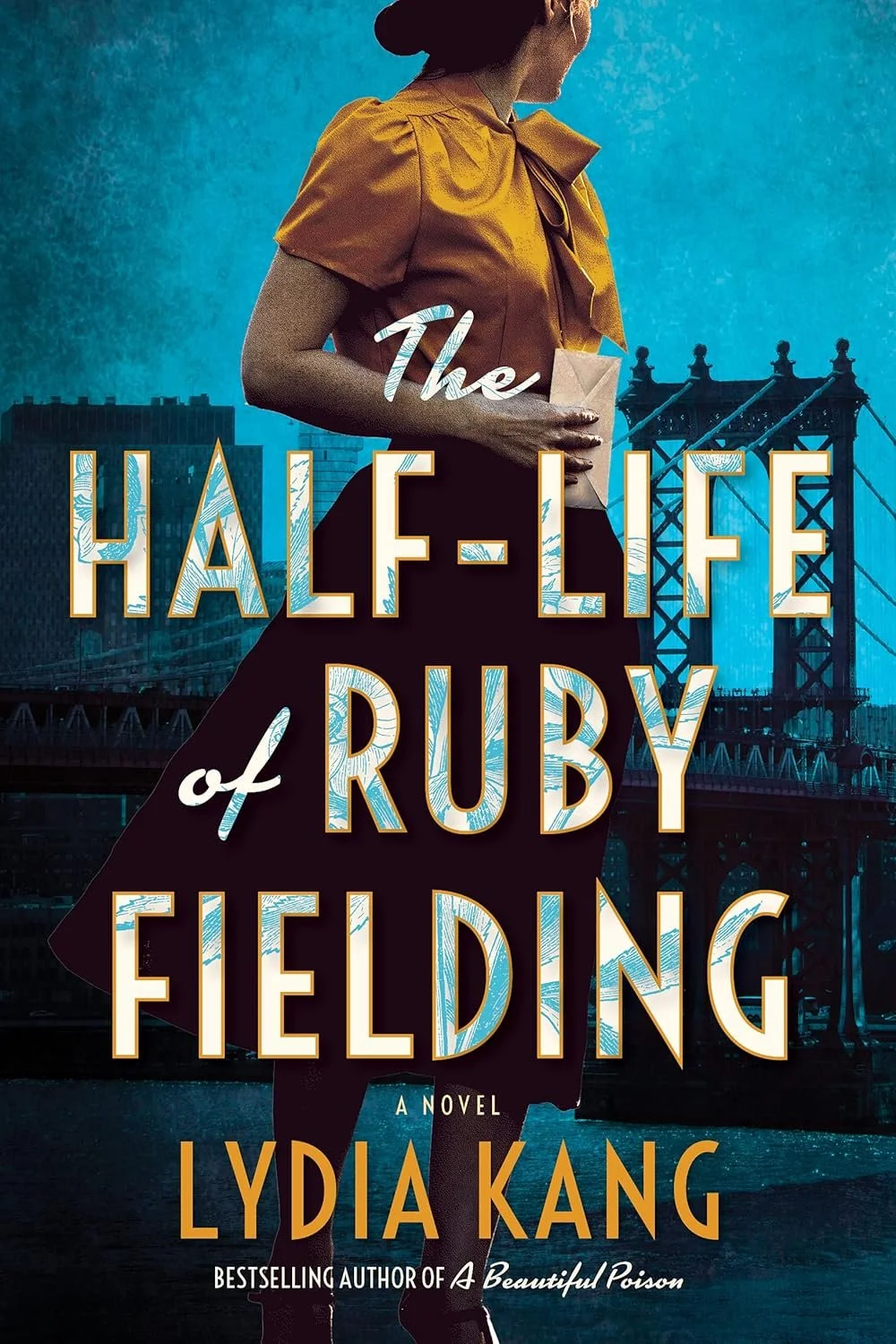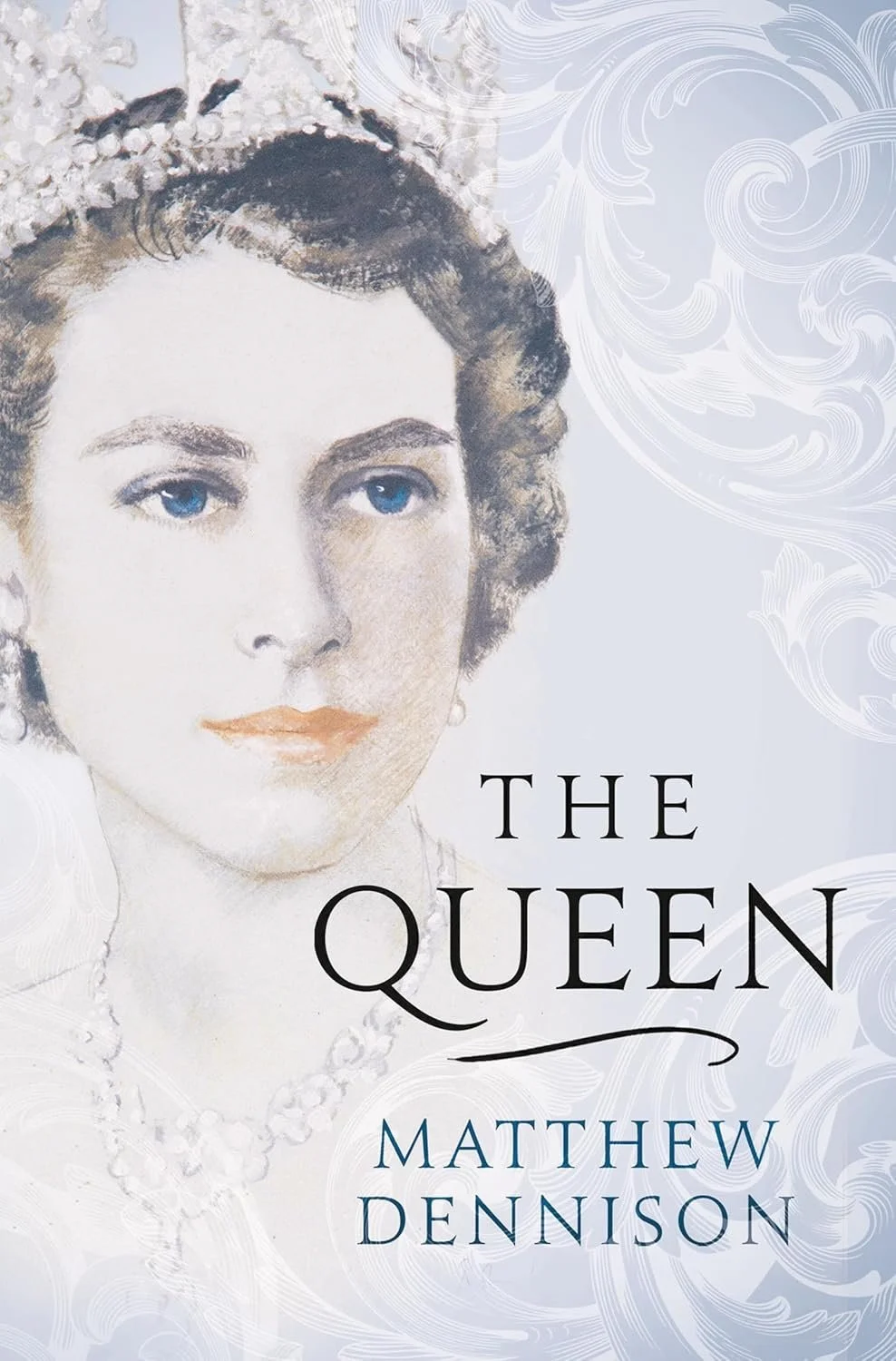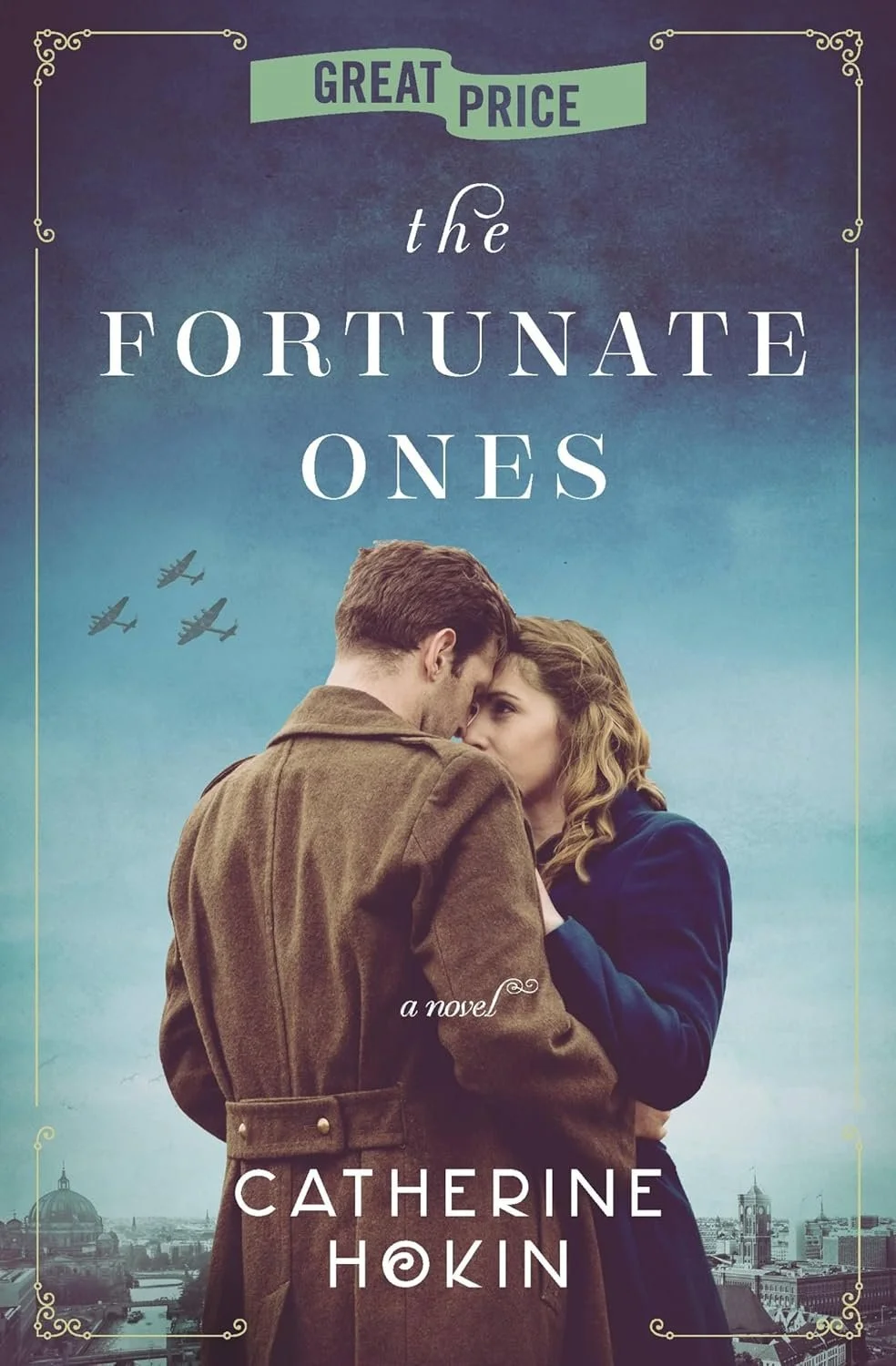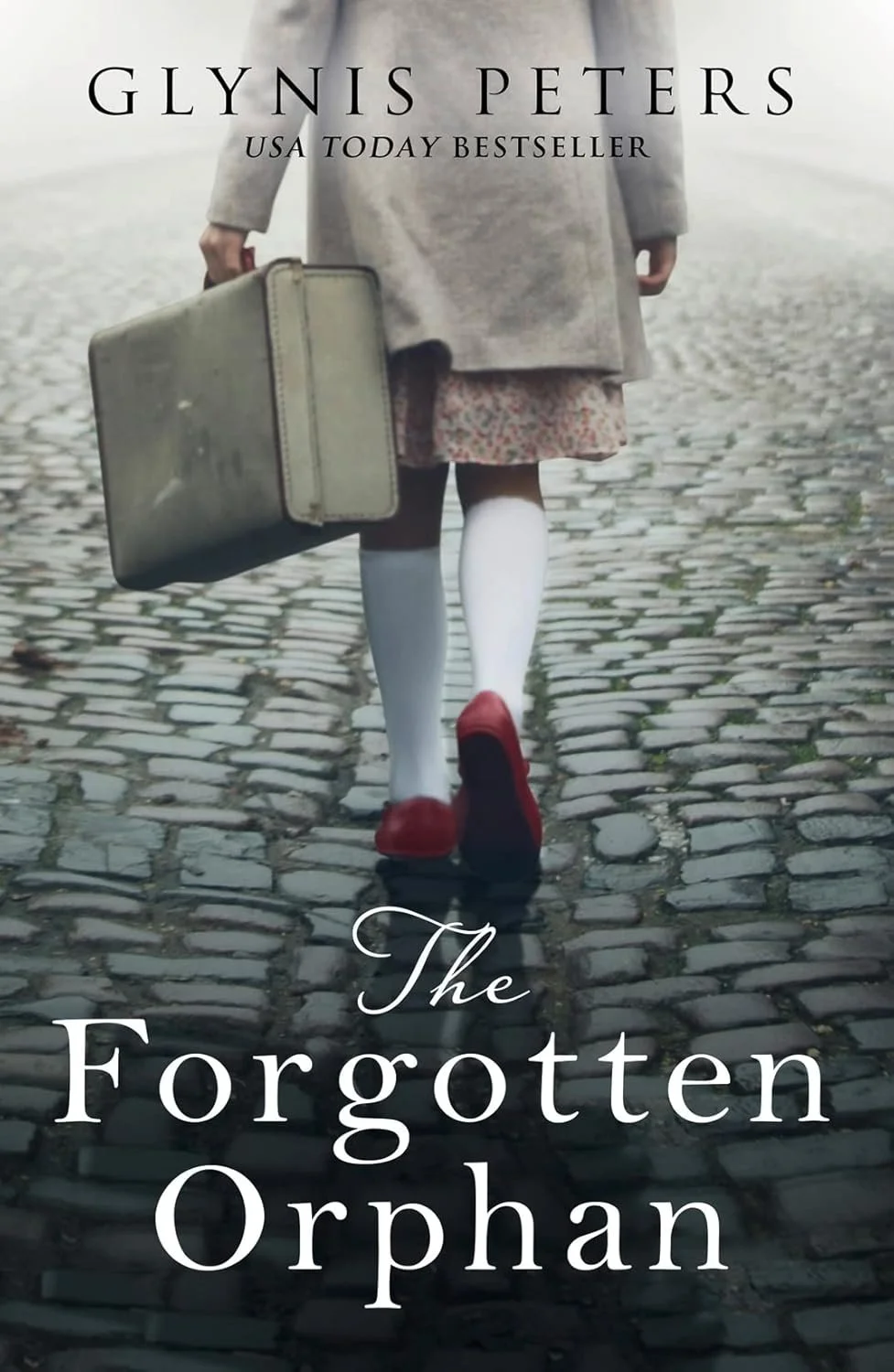Books Set in the 1940s
Books Set in the 1940s
I want to note that I do not get paid to do these posts, I just love authors and the book industry. However, they do take time and energy to create. If you want to donate a few dollars to my coffee fund, which keeps this blog going, you can do so here: https://venmo.com/AshleyHasty or here: http://paypal.me/hastybooklist.
1940s: A Decade of Resilience and Transformation
The 1940s were a decade unlike any other, marked by the hardships of war, the spirit of unity, and significant cultural shifts. As the world endured the Second World War, this era shaped the lives of millions, leading to lasting changes in society, entertainment, and fashion. Yet amid the challenges, the 1940s also saw the seeds of innovation, creativity, and a post-war optimism that set the stage for the modern world. Let’s take a nostalgic trip back to this pivotal decade, where resilience met transformation.
The War Years: Unity and Sacrifice
World War II defined the first half of the 1940s, impacting nearly every aspect of life. Families were separated, as fathers, brothers, and sons went off to fight, while women took on roles traditionally held by men. This was the era of Rosie the Riveter, the symbol of women’s contribution to the war effort, working in factories and supporting the troops. Victory gardens sprouted in backyards, rationing became part of daily life, and wartime propaganda filled movie theaters and radio waves, all uniting people in a collective sense of purpose.
Despite the turmoil, a deep sense of camaraderie emerged. People from different backgrounds came together for a common cause, a sentiment that still resonates today when looking back at the 1940s. For many, the war years were also a time of sacrifice and longing, yet they provided a foundation of strength that would carry into the post-war era.
Post-War Boom: Optimism and the American Dream
The end of the war in 1945 ushered in a period of relief and excitement. Soldiers returned home, and families were reunited, sparking the post-war baby boom. Suburbs expanded as the American Dream flourished, with the idea of homeownership, stable jobs, and prosperity driving many forward.
This was also the era when the GI Bill helped veterans attend college, buy homes, and enter the workforce. The economic boom transformed society, offering new opportunities for growth and advancement, while industries adapted to peacetime production, leading to increased consumerism and technological advances.
The Golden Age of Hollywood
Hollywood was a shining beacon of escapism during the 1940s. Movies became more important than ever, providing a way for people to forget their worries for a few hours and lose themselves in stories of romance, adventure, and intrigue. Iconic films such as Casablanca (1942), It’s a Wonderful Life (1946), and The Best Years of Our Lives (1946) defined the decade, with legendary stars like Humphrey Bogart, Ingrid Bergman, Katharine Hepburn, and Cary Grant dominating the silver screen.
The films of the 1940s were often sentimental, heroic, and filled with characters who embodied both strength and vulnerability. It was the golden age of the film noir genre, too, with its shadowy cinematography and morally complex characters offering something darker for audiences.
The Big Band Era: Music That United
If there’s one sound that instantly transports you back to the 1940s, it’s the lively, brassy tunes of big band music. Orchestras led by Duke Ellington, Glenn Miller, Benny Goodman, and Count Basie set the soundtrack for the decade, offering an upbeat contrast to the hardships of the war.
Swing dancing became wildly popular, providing an outlet for joy and connection. Couples packed dance halls to show off their jitterbug skills, twirling and spinning to the infectious rhythms of songs like "In the Mood" and "Sing, Sing, Sing." Radio was the main medium for music, and the advent of the jukebox made it easy for people to hear their favorite songs in diners and soda shops.
Fashion: Function Meets Glamour
Fashion in the 1940s was heavily influenced by the war. With materials like wool, silk, and leather rationed, women adapted by making do with what they had. Practicality was key, with tailored suits, knee-length skirts, and utility dresses becoming popular for women. Shoulder pads, nipped waists, and A-line skirts defined the silhouette, giving women a look of strength while still maintaining femininity.
For men, military uniforms often became part of everyday wear, and after the war, they returned to classic suits with wide lapels and fedora hats. The end of the war also saw the return of glamour, with Christian Dior’s "New Look" revolutionizing fashion in 1947. Full skirts, tiny waists, and luxurious fabrics signaled a shift away from wartime austerity to a more opulent, celebratory style.
Radio: The Entertainment Hub
Long before television became a household staple, radio reigned supreme in the 1940s. Families gathered around the radio for news, entertainment, and music. Popular radio shows like The Shadow, Fibber McGee and Molly, and The Jack Benny Program kept listeners engaged with humor, drama, and thrilling stories. News bulletins provided updates from the war front, making radio an essential tool for staying informed during the conflict.
Radio also gave rise to the careers of many stars who would later transition to television, making it a vital part of the entertainment landscape.
Technological Advances
World War II spurred rapid advancements in technology, many of which carried over into civilian life after the war. Radar, jet engines, and computers were among the breakthroughs that emerged during the 1940s. After the war, these innovations helped reshape industries and everyday life, from faster travel to the early development of computers like the ENIAC, which would pave the way for the digital age.
Conclusion: A Decade of Transformation
The 1940s were a decade of transformation. The war brought both devastation and unity, while the post-war years gave rise to optimism, prosperity, and a new way of life. From the big band music that lifted spirits to the fashion trends that reflected both practicality and glamour, the 1940s were a time of resilience and hope. Looking back, this era represents a turning point in history—a time when the world endured great challenges but emerged stronger and ready to embrace the future.
The Keeper of Lost Art by Laura Morelli
Author Interview with Laura Morelli
During World War II, a girl makes an unbreakable connection with a boy sheltering in her family’s Tuscan villa, where the treasures of the Uffizi Galleries are hidden. A moving coming-of-age story about the power of art in wartime, based on true events.
As Allied bombs rain down on Torino in the autumn of 1942, Stella Costa’s mother sends her to safety with distant relatives in a Tuscan villa. There, Stella finds her family tasked with a great responsibility: hiding nearly 300 priceless masterpieces from Florence, including Botticelli’s famous Primavera.
With the arrival of German troops imminent, Stella finds herself a stranger in her family’s villa and she struggles to understand why her aunt doesn’t like her. She knows it has something to do with her parents—and the fact that her father, who is currently fighting at the front, has been largely absent from her life.
When a wave of refugees seeks shelter in the villa, Stella befriends Sandro, an orphaned boy with remarkable artistic talent. Amid the growing threats, Sandro and Stella take refuge in the villa’s “treasure room,” where the paintings are hidden. There, Botticelli’s masterpiece and other works of art become a solace, an inspiration, and the glue that bonds Stella and Sandro as the dangers grow.
A troop of German soldiers requisitions the villa and puts everyone to forced labor. Now, with the villa full of German soldiers, refugees, a secret guest, and hundreds of priceless treasures, no one knows who will emerge unscathed, and whether the paintings will be taken as spoils or become unintended casualties.
Inspired by the incredible true story of a single Tuscan villa used as a hiding place for the treasures of Florentine art during World War II, The Keeper of Lost Art takes readers on a breathtaking journey into one of the darkest chapters of Italy’s history, highlighting the incredible courage of everyday people to protect some of the most important works of art in western civilization.
The Sleeping Beauties by Lucy Ashe
Author Interview with Lucy Ashe
Late spring 1945, London: The war in Europe is over. But for Briar Woods, a dancer at Sadler’s Wells Ballet, the past resurfaces and she must come face to face with the truth. It feels as though her war has only just begun.
Since 1939, Rosamund Caradon had taken in many children from Britain’s bombarded cities, sheltering them in her Devonshire manor. Now, with Germany’s surrender, she is en route to London to return the last evacuees, accompanied by her dance-obsessed daughter Jasmine. Rosamund vows to protect Jasmine from any peril, but a chance meeting with a Sadler’s Wells dancer changes everything. When the beautiful, elusive Briar Woods bursts into Rosamund’s train carriage, it’s clear her sights are set on the captivated Jasmine. As Briar sets out to charm them both, Rosamund cannot shake the eerie feeling this accidental encounter isn’t what it seems. While Briar may be far away from the pointe shoes and greasepaint of The Sleeping Beauty ballet rehearsals, her performance for Rosamund might just be her most successful yet. A dance that could turn deadly . . .
The Hidden Book by Kirsty Manning
Also listed in Books Set in the 1980s
From bestselling author Kirsty Manning comes a stunning novel based on a true story of clandestine courage in World War II as prisoners of war risk their lives to secure evidence of Nazi atrocities—and how one man concealed it for decades before passing it on to his family who struggle to understand their inherited legacy of trauma.
Austria, 1940s: Yugoslavian Nico Antonov is just one of more than 200,000 people imprisoned in the Mauthausen concentration camp near the Danube River. Malnourished and forced into hard labor in a quarry, he still defies his captors any way he can. When fate brings him into contact with Lena Lang, a young woman living with her family in fear of their Nazi occupiers, he finds an ally.
SS officers have charged Spanish POW and photographer Mateo Baca with recording the events and prisoners of Mauthausen and to make five copies of the collected photo book for the Third Reich’s leaders. But Mateo also creates a sixth book to be smuggled out of the camp—where Nico entrusts Lena to hide it and protect their secret.
Australia, 1980s to present day: When teenager Hannah Campbell discovers her grandfather Nico’s mysterious photo album, filled with horrific visions of suffering and cruelty, the barbarities of World War II no longer feel like ancient history. Haunted by the images for years, as a university student and a married young mother, she pursues the truth behind her grandfather’s incarceration. As Hannah experiences love and loss in her own life, she comes to understand how the photos not only capture history but reflect a shared humanity that must never be forgotten.
The Last Light Over Oslo by Alix Rickloff
Based on true events, this gripping historical novel set in Norway and Sweden in 1940, follows one of the first female US Ministers, Daisy Harriman, and her niece as the two are unexpectedly caught up in the German invasion of Norway.
The Hedgerow by Anne Leigh Parrish
Author Interview with Anne Leigh Parrish
It’s 1949, the freedom granted women by the Second World War is over, and stifling social conventions are once more at play. Edith Sloan, the rebellious, well-educated heroine of An Open Door returns in The Hedgerow to pursue her dreams of owning a thriving bookstore on Harvard Square and establishing a poetry press to publish the silent and underserved. Free of her dreary marriage to Walter, she receives a proposal from Henry, a wealthy British peer and the man who made the purchase of her bookstore possible. When she accepts, is it from love or gratitude? Will being his wife help or hinder her plans? Edith soon finds herself at the intersection of free expression and censorship. Duty competes with desire, while serious endeavors are undermined by trivial pursuits. As she tries to balance the competing demands in her life, troubling facts from Henry’s past come to light. Edith also discovers that being a pioneer in publishing comes with consequences she hadn’t foreseen. The decade draws to a close and delivers one more surprise Edith must summon extraordinary courage to face.
Beyond Summerland by Jenny Lecoat
Author Interview with Jenny Lecoat
Beatriz Williams meets Laura Spence-Ash in this fast-paced and tension-filled novel about secrets and betrayal in a small community recovering from war, and the two young women at the center of a volatile mystery.
In June of 1945, Jersey is in the midst of change as the German occupation of the Channel Islands comes to an end. However, demands for punishment are rising for those suspected of collaborating with the Nazis. Neighbor turns against neighbor as distrust flourishes and accusations fly, especially towards women who had romantic relationships with the German soldiers.
When Jean Parris learns that her father, who died in a German prison, was reported to the Nazis by an anonymous woman, her rage hits a boiling point. The suspect, Hazel Le Tourneur, denies the accusation but has a motive for wanting Jean's father gone. Then, when Hazel catches Jean secretly meeting with a German soldier, the women form an unexpected bond in the face of ruinous consequences. With tension running high and secrets at every turn, the truth behind the accusations may be more complicated than anyone could imagine.
The Forgotten Names by Mario Escobar
In August 1942, French parents were faced with a horrible choice: watch their children die, or abandon them forever. Fifty years later, it becomes one woman's mission to match the abandoned names with the people they belong to.
Five years after the highly publicized trial of Klaus Barbie, the "Butcher of Lyon," law student Valérie Portheret began her doctoral research into the 108 children who disappeared from Vénissieux fifty years earlier, children who somehow managed to escape deportation and certain death in the German concentration camps. She soon discovers that their rescue was no unexplainable miracle. It was the result of a coordinated effort by clergy, civilians, the French Resistance, and members of other humanitarian organizations who risked their lives as part of a committee dedicated to saving those most vulnerable innocents.
Theirs was a heroic act without precedent in Nazi-occupied Europe, made possible due to a loophole in the Nazi agenda to deport all Jewish immigrants from the country: a legally recognized exemption for unaccompanied minors. Therefore, to save their children, the Jewish mothers of Vénissieux were asked to make the ultimate sacrifice of abandoning them forever.
Told in dual timelines, The Forgotten Names is a reimagined account of the true stories of the French men and women who have since been named Righteous Among the Nations, the children they rescued, the stifled cries of shattered mothers, and a law student, whose twenty-five-year journey allowed those children to reclaim their heritage and remember their forgotten names.
The Editor by Sara B. Franklin
Legendary editor Judith Jones, the woman behind some of the most important authors of the 20th century—including Julia Child, Anne Frank, Edna Lewis, John Updike, and Sylvia Plath—finally gets her due in this intimate biography.
When twenty-five-year-old Judith Jones began working as a secretary at Doubleday’s Paris office in 1949, she was wading through manuscripts in the slush pile until one caught her eye. She read the book in one sitting, then begged her boss to consider publishing it. A year later, Anne Frank: The Diary of a Young Girl became a bestseller. It was the start of a culture defining career in publishing.
Over more than half a century as an editor at Knopf, Jones became a legend, nurturing future literary icons such as Sylvia Plath, Anne Tyler, and John Updike. At the forefront of the cookbook revolution, she published the who’s who of food writing: Edna Lewis, M.F.K. Fisher, Claudia Roden, Madhur Jaffrey, James Beard, and, most famously, Julia Child. Jones celebrated the art and pleasures of cooking and culinary diversity, forever changing the way Americans think about food.
Her work spanned the decades of America’s most dramatic cultural change. From the end of World War II through the Cold War; from the civil rights movement to the fight for women’s equality, Jones’s work questioned convention, using books as a tool of quiet resistance.
Now, her astonishing career is explored for the first time. Based on exclusive interviews, never-before-seen personal papers, and years of research, The Editor tells the riveting behind-the-scenes narrative of how stories are made, finally bringing to light the audacious life of one of our most influential tastemakers.
All for You: A World War II Family Memoir of Love, Separation, and Loss
Also listed in Books About The Holocaust
Emil, a Jewish man in 1930s Germany, loves Deta, a Lutheran, but Nazi racial purity laws forbid their marriage. Desperate to find a place where their love can survive, they must separate to get away. Deta leaves for England, but Emil has to overcome red tape, resistance from his aging parents, and his own ambivalence before he can embark for America. With only telegrams and letters from Deta to sustain him, he does all he can to bring her and his family to America. But the clock is ticking as the war breaks out and the Nazis tighten their stranglehold.
From the heartbreaking news of November 10, 1938 (Kristallnacht) to the horrific revelations after the German surrender in 1945, Emil’s story runs the course of the war. Can he make his way in this new world? Will he be reunited with his beloved Deta? And will he ever see his family again?
Told by Emil’s daughter with the help of letters and historical documents, All for You is a true story about love overcoming despair and the impact the Holocaust continues to have on the rising generation.
Daughters of Shandong by Eve J. Chung
A propulsive, extraordinary novel about a mother and her daughters’ harrowing escape to Taiwan as the Communist revolution sweeps through China, by debut author Eve J. Chung, based on her family story
Daughters are the Ang family’s curse.
In 1948, civil war ravages the Chinese countryside, but in rural Shandong, the wealthy, landowning Angs are more concerned with their lack of an heir. Hai is the eldest of four girls and spends her days looking after her sisters. Headstrong Di, who is just a year younger, learns to hide in plain sight, and their mother—abused by the family for failing to birth a boy—finds her own small acts of rebellion in the kitchen. As the Communist army closes in on their town, the rest of the prosperous household flees, leaving behind the girls and their mother because they view them as useless mouths to feed.
Without an Ang male to punish, the land-seizing cadres choose Hai, as the eldest child, to stand trial for her family’s crimes. She barely survives their brutality. Realizing the worst is yet to come, the women plan their escape. Starving and penniless but resourceful, they forge travel permits and embark on a thousand-mile journey to confront the family that abandoned them.
From the countryside to the bustling city of Qingdao, and onward to British Hong Kong and eventually Taiwan, they witness the changing tide of a nation and the plight of multitudes caught in the wake of revolution. But with the loss of their home and the life they’ve known also comes new freedom—to take hold of their fate, to shake free of the bonds of their gender, and to claim their own story.
Told in assured, evocative prose, with impeccably drawn characters, Daughters of Shandong is a hopeful, powerful story about the resilience of women in war; the enduring love between mothers, daughters, and sisters; and the sacrifices made to lift up future generations.
The Wartime Book Club by Kate Thompson
Inspired by true events, The Wartime Book Club is an unforgettable story of everyday bravery and resistance, full of romance, drama, and camaraderie and a tribute to the joy of reading and the power of books in our darkest hour.
The Isle of Jersey was once a warm and neighborly community, but in 1943, German soldiers patrol the cobbled streets, imposing a harsh rule.
Nazis have ordered Grace La Mottée, the island's only librarian, to destroy books that threaten the new regime. Instead, she hides the stories away in secret. Along with her headstrong best friend, she wants to fight back. So she forms the Wartime Book Club: a lifeline, offering fearful islanders the joy and escapism of reading.
But as the occupation drags on, the women's quiet acts of bravery become more perilous – and more important – than ever before. And when tensions turn to violence, they are forced to face the true, terrible cost of resistance . . .
Based on astonishing real events, The Wartime Book Club is a love letter to the power of books in the darkest of times – as well as a moving page-turner that brings to life the remarkable, untold story of an island at war.
Kate's War by Linda Stewart Henley
Author Interview with Linda Stewart Henley
Set in a London suburb during the first year of WWII, and inspired by a little-known event from 1940 in which the author’s father participated, KATE'S WAR tells the story of a young teacher and her family facing the dangers of war, especially when sheltering one of her pupils, a Jewish German refugee. This poignant and gripping tale of bravery and hope will appeal to fans of WWII novels like The Paris Library, The Nightingale, and Beneath A Scarlet Sky, in which ordinary people do extraordinary things.
The Lost Book of Bonn by Brianna Labuskes
For fans of The Rose Code and The Librarian Spy comes another literary themed historical novel from the author of The Librarian of Burned Books.
Germany, 1946: Emmy Clarke is a librarian not a soldier. But that doesn’t stop the Library of Congress from sending her overseas to Germany to help the Monuments Men retrieve and catalog precious literature that was plundered by the Nazis. The Offenbach Archival Depot and its work may get less attention than returning art to its rightful owners, but for Emmy, who sees the personalized messages on the inside of the books and the notes in margins of pages, it feels just as important.
On Emmy’s first day at work, she finds a poetry collection by Rainer Maria Rilke, and on the title page is a handwritten dedication: “To Annelise, my brave Edelweiss Pirate.” Emmy is instantly intrigued by the story behind the dedication and becomes determined to figure out what happened.
The hunt for the rightful owner of the book leads Emmy to two sisters, a horrific betrayal, and an extraordinary protest against the Nazis that was held in Berlin at the height of the war. Nearly a decade earlier, hundreds of brave women gathered in the streets after their Jewish husbands were detained by the Gestapo. Through freezing rain and RAF bombings, the women faced down certain death and did what so few others dared to do under the Third Reich. They said no.
Emmy grapples with her own ghosts as she begins to wonder if she’s just chasing two more. What she finds instead is a powerful story of love, forgiveness, and courage that brings light to even the darkest of postwar days.
The Lies We Leave Behind by Noelle Salazar
Author Interview with Noelle Salazar
Somewhere in the Pacific, 1943. Kate Campbell is a nurse who bravely flies back and forth from the front to rescue wounded soldiers, amid long days, harsh conditions and often dangerous weather. Driven by a deep personal need to help in the war effort, she is conflicted when an injury results in her reassignment to the relative comfort of the English countryside.
Love has never been part of her plan, but despite herself, she falls for an officer with three bullet wounds, startling blue eyes and a wicked sense of humor. For the first time, Kate sees a future far from the horrors of war and hate. But before she can pursue it, a secret from her past calls her to duty, and she'll have to travel back into danger one more time to rescue a part of herself she'd left behind. But will she make it back? And will that future still be waiting for her if she does?
Daughter of Ruins by Yvette Manessis Corporon
A motherless daughter. An Italian prostitute. A mail-order bride. Are these women brave enough to change their fates?
Demitra's mother died in America in the 1930s when Demitra was three years old. Her father took her home to the Greek island of Cephalonia, where she endures a lonely childhood and dreams her dead mother watches over her, like the goddesses she reads about in her mythology books. When Demitra comes of age, she refuses to marry the man chosen for her. Instead, she defiantly begins an affair with a forbidden man who ignites her passion for painting the goddesses she once imagined protected her.
Elena is a beautiful Italian woman who dreamed of a life away from the brothels where she was raised. But opportunities are not meant for daughters of prostitutes and Elena has no choice but to become one herself. When Italy occupies Cephalonia, Elena finds work entertaining the soldiers. Her life on the island is happy and carefree--until the Germans arrive in 1943.
Maria lives in a poor mountain village in 1921 with a loving mother and sister. When her father grows desperate to feed his family, he sends her to America as a picture bride to marry a stranger. Only eighteen years old, Maria is terrified of the journey ahead.
Daughter of Ruins is an all-encompassing tale steeped in the rich history, culture, and myths of Greece. It is a deeply moving story that follows three women as they struggle to control their destinies, fighting to become the women they were meant to be.
In the Garden of Monsters by Crystal King
Author Interview with Crystal King
A woman with no past. A man who seems to know her. And a monstrous garden that could be the border between their worlds…
Italy, 1948
Julia Lombardi is a mystery even to herself. The beautiful model can’t remember where she’s from, where she’s been or how she came to live in Rome. When she receives an offer to accompany celebrated eccentric artist Salvador Dalí to the Sacro Bosco—Italy’s Garden of Monsters—as his muse, she’s strangely compelled to accept. It could be a chance to unlock the truth about her past…
Shrouded in shadow, the garden full of giant statues that sometimes seem alive is far from welcoming. Still, from the moment of their arrival at the palazzo, Julia is inexplicably drawn to their darkly enigmatic host, Ignazio. He’s alluring yet terrifying—and he seems to know her.
Posing for Dalí as the goddess Persephone, Julia finds the work to be perplexing, particularly as Dalí descends deeper into his fanaticism. To him, she is Persephone, and he insists she must eat pomegranate seeds to rejoin her king.
Between Dalí’s fevered persistence, Ignazio’s uncanny familiarity and the agonizing whispered warnings that echo through the garden, Julia is soon on the verge of unraveling. And she begins to wonder if she’s truly the mythical queen of the Underworld…
When We Were Enemies by Emily Bleeker
Author Interview with Emily Bleeker
Two women, generations apart, in the spotlight. A powerful novel about family secrets, devastating choices, and hope for the future.
Camera-shy Elise Branson is different from the other women in her matriline. Her mother is an award-winning actress. Her late grandmother, Vivian Snow, is a beloved Hollywood icon. But when Elise’s upcoming wedding coincides with a documentary being made about Vivian, Elise can’t escape the camera’s gaze. And even in death, neither can her grandmother.
It’s 1943 when Vivian, a small-town Indiana girl, lends her home front support to the war effort. As a translator in the nearby Italian POW camp, she’s invaluable. As a celebrated singer for the USO, she lifts men’s spirits and falls in love with a soldier. But behind this all-American love story is a shocking secret—one vital to keep buried if Vivian is to achieve the fame and fortune she covets.
For Elise and Vivian, what’s hidden—and what’s exposed—threatens to unravel their lives. The heart-wrenching choices they must make will change them both forever.
The Woman With a Purple Heart by Diane Hanks
"Historical fiction at its finest!" —Amanda Skenandore, author of The Second Life of Mirielle West and The Nurse's Secret
Based on the real life of Lieutenant Annie Fox, Chief Nurse of Hickam Hospital, The Woman with a Purple Heart is an inspiring WWII novel of heroic leadership, courage, and friendship that also exposes a shocking and shameful side of history.
Annie Fox will stop at nothing to serve her country. But what happens when her country fails her?
In November 1941, Annie Fox, an Army nurse, is transferred to Hickam Field, an air force base in Honolulu. The others on her transport plane are thrilled to work in paradise, but Annie sees her new duty station as the Army’s way of holding the door open to her retirement. But serving her country is her calling and she will go wherever she is told.
On December 7, Annie’s on her way to work when the first Japanese Zero fighter plane flies low over Hickam’s Parade Ground. The death and destruction that follow leave her no time to process what’s happening. She rallies her nurses, and they work to save as many lives as they can. But soon their small hospital is overwhelmed. Annie drives into Honolulu to gather supplies, nurses, and several women who will donate blood. However, the nurses are Japanese Americans, and the blood donors are prostitutes.
Under Annie’s leadership and working together in unexpected ways, they make it through that horrific day, when one of the Japanese American nurses and Annie’s friend, Kay, is arrested as a suspected subversive. As Hickam tries to recover, Annie works to find her friend and return Kay to her family. But Annie’s love for her country is put to the test. How can she reconcile the American bravery and resilience she saw on December 7 with the prejudice and injustice she witnesses just a few months later?
Praise for The Woman with a Purple Heart:
"Vividly portrays a little-known story in a well-known time on a day that will live in infamy. A stirring read!" —Erika Robuck, national bestselling author of The Invisible Woman
"A wonderful tribute to a true American hero." —Sara Ackerman, USA Today bestselling author of Radar Girls and The Codebreaker's Secret
"Fast-paced and immersive. This is the kind of story that sticks with you long after turning the final page." —Elise Hooper, author of Angels of the Pacific
Last Night at the Hollywood Canteen by Sarah James
Perhaps the best place in 1943 Hollywood to see the stars is the Hollywood Canteen, a club for servicemen staffed exclusively by those in show business. Murder mystery playwright Annie Laurence, new in town after a devastating breakup, definitely hopes to rub elbows with the right stars. Maybe then she can get her movie made.
But Hollywood proves to be more than tinsel and glamour. When despised film critic Fiona Farris is found dead in the Canteen kitchen, Annie realizes any one of the Canteen's luminous volunteers could be guilty of the crime. To catch the killer, Annie falls in with Fiona's friends, a bitter and cynical group―each as uniquely unhappy in their life and career as Annie is in hers―that call themselves the Ambassador's Club.
Solving a murder in real life, it turns out, is a lot harder than writing one for the stage. And by involving herself in the secrets and lies of the Ambassador's Club, Annie just might have put a target on her own back.
American Wolf: From Nazi Refugee to American Spy by Audrey Birnbaum
Author Interview with Audrey Birnbaum
In the summer of 1941, 11-year old Wolf is growing up amidst the rubble and antisemitism of war-torn Nazi Berlin. Destitute and facing deportation, he must leave behind his sister and travel with his family across a continent entrenched in war. With nothing in hand but expired visas to the US, Wolf and his family must figure out how to sneak aboard the Spanish freighter the Navemar, a ship that will gain its reputation as the "Hell Ship of Death." But this is only the beginning of Wolf's saga.
"American Wolf: From Nazi Refugee to American Spy" is a heart-stopping true story full of last-minute rescues, near-death encounters, and survival against untold odds. It is also a story about coming of age, family dysfunction and national identity, and is a resounding testament to the triumph of the human spirit.
Using the notes compiled by her father, author Audrey Birnbaum vividly retells a poignant account of Wolf's childhood in Berlin, his riveting escape from Nazi Germany, and the continued challenges he faced even as he reached freedom.
Bessie: A Novel by Linda Kass
Bookish Buys inspired by Bessie by Linda Kass
Just days after the close of World War II, Bess Myerson, the daughter of poor Russian Jewish immigrants living in the Bronx, is competing in the Miss America pageant. At stake: a $5,000 scholarship. The tension and excitement in Atlantic City's Warner Theatre are palpable, especially for traumatized Jews rooting for one of their own. So begins BESSIE.
Drawing on biographical and historical sources, BESSIE reimagines the early life of Bess Myerson, who, in 1945 at age twenty-one, remarkably rises to become one of the most famous women in America. This intimate fictional portrait reveals the transformation of the nearly six-foot-tall, self-deprecating yet talented preteen into an exemplar of beauty, a peripheral quality in her world, where success is measured by intellectual attainment. Yet it is the focus on her beauty, and the secular world of pageantry, that she must choose to escape her roots and fulfill her fierce desire to achieve and become someone for whom great things happen.
BESSIE is a tender study of a bold young woman living at a precarious moment in our cultural history as she searches for love and acceptance, eager to make her mark on the world.
The Last Masterpiece by Laura Morelli
Author Interview with Laura Morelli
In a race across Nazi-occupied Italy, two women—a German photographer and an American stenographer—hunt for priceless masterpieces looted from the Florentine art collections.
In the summer of 1943, Eva Brunner is taking photographs of Nazi-looted art hidden in the salt mines of the Austrian hinterland. Across the ocean in Connecticut, Josephine Evans is working as a humble typist at the Yale Art Gallery.
When both women are called to Italy to contribute to the war effort, neither imagines she will hold the fate of some of the world’s greatest masterpieces torn from the Uffizi Galleries and other Florentine art collections in her hands.
But as Italy turns from ally to enemy and Hitler’s plan to destroy irreplaceable monuments and works of art becomes frighteningly clear, each woman’s race against the clock—and against one another—might demand more than they were prepared to give.
The Last Masterpiece takes readers on a heart-pumping adventure up the Italian peninsula, where nothing is as it seems and some of the greatest works of art and human achievement are at stake. Who might steal and who might save a work of art—and at what cost?
Inspired by the incredible true story of the Monuments Women, the Fifth Army WACs, and the looted Florentine art collections during World War II, the latest historical novel by USA Today bestselling author and art historian Laura Morelli plunges readers into the heart of war-torn Italy.
What We Leave Behind by Christine Gallagher Kearney
In 1947, German war bride Ursula arrives in Minneapolis torn between guilt over leaving loved ones behind and her desire to start a new life, and a family. But the American dream proves elusive—she is struck with polio, and then shocked by the sudden death of her GI husband. When she finds herself falling for another man, she is faced with a dilemma: how to reconcile her dream of motherhood with an America that is so different from what she imagined.
The Paris Agent by Kelly Rimmer
Author Interview with Kelly Rimmer
Twenty-five years after the end of the war, an aging Marcel Augustin is reflecting on his life during those perilous, exhilarating years as a British SOE operative in occupied France—in particular the agent who saved his life during a mission gone wrong, whose real name he never knew, nor whether she survived the war. Marcel’s daughter Charlotte begins a search for answers— What follows is the story of Eloise, Josie and Virginia, three otherwise ordinary, average women whose lives intersect in 1943 when they’re called up by the SOE for deployment in France. Taking enormous risks to support the allied troops with very little information or resources, the three women have no idea they’re at the mercy of a double agent within their ranks who's causing chaos within the French circuits, whose efforts will affect the outcome of their lives.
As Charlotte’s search for answers continues, new suspicions are raised about the identity of the double agent, with unsettling clues pointing to her father, and more mysteries are unearthed from the last days of the war about the eventual fates of Eloise, Josie and Virginia.
To Die Beautiful by Buzzy Jackson
Historian and award-winning author of three nonfiction books Buzzy Jackson brings to life the incredible true story of World War II hero Hannie Schaft in this debut, TO DIE BEAUTIFUL. Following Hannie’s harrowing journey as a member of the Dutch Resistance from 1940-1945, the novel is a riveting tale of love, loyalty, and the limits we confront when our deepest values are tested.
When the Nazi occupation in The Netherlands endangers her two Jewish best friends, shy law student Hannie is moved to fight against the insidious rise of fascism. She first begins her Resistance work as a courier but quickly realizes the value of her unsuspecting appearance. Soon, she’s an active armed member, bombing munitions factories and luring in powerful Nazis with her beauty to assassinate them at point-blank range. Word of her threatening prowess even makes its way to Adolf Hitler, who dubs her the "Girl with Red Hair."
As the world around her collapses, Hannie builds a chosen family within the Resistance, even falling in love with a daring fellow resistor at a tremendous cost. Her greatest weapon is her determination to "stay human" (blijf menselijk), a promise increasingly difficult to keep amidst the devastation that surrounds her. Hannie continually channels the strongest women in her life—including her late sister Annie—in order to stand up in the face of unthinkable danger.
Although Hannie is renowned in the Netherlands, her inspirational resistance work is little-known in the U.S. A member of the National Book Critics Circle with a PhD in history, Jackson’s skills as a writer and historian bring Hannie’s story vividly to life for English-language audiences. Her meticulous historical research, alongside the emotional weight and striking present-day relevance of Hannie’s story, make TO DIE BEAUTIFUL a moving page-turner not to be missed.
The Hidden Life of Aster Kelly by Katherine A. Sherbrooke
Author Interview with Katherine A. Sherbrooke
When a runway model in 1940s Hollywood makes a split-second decision intended to protect those she loves, she triggers a cascade of secrets that threatens to upend her daughter’s life decades later.
After winning a prestigious fashion design contest in 1948, Aster Kelly flees the world of modeling in New York and arrives in Beverly Hills to claim her prize: a design apprenticeship with Fernando Tivoli. But Fernando has no such job available. He’s busily preparing for the opportunity of a lifetime—proving to Galaxy Studios that he is the perfect couturier for their A-list stars. The moment he meets Aster, though, he knows she’s the missing ingredient he needs and asks her to be his stand-in model for Lauren Bacall. Aster is dismayed to once again have her creative potential sidelined, but when Fernando promises to mentor her if he wins the contract, she agrees.
Aster and Fernando quickly become romantically entangled with Hollywood insiders—Aster with the head of Galaxy Studios, Fernando with their biggest up-and-coming star, Christopher Page—and Aster and Fernando’s friendship becomes essential as they navigate a glamorous and complicated existence where what’s real must often be hidden, and no one is quite who they seem. As Aster’s ambitions grow and she faces a crisis, and Fernando’s future is threatened by the judgmental Hollywood machine, Aster makes a decision that changes the trajectory of their lives forever.
Twenty-five years later, despite knowing little of her mother’s time in Hollywood and being raised well outside the reaches of fame, Aster’s daughter Lissy is poised to become a Broadway star. But when the musical gets off to a rocky start, Lissy makes a rash decision of her own in an attempt to save the show. And when long-buried secrets blindside them both, mother and daughter are forced to question everything they thought they knew.
The Hidden Life of Aster Kelly is a story about the bonds of chosen family, the cost of fame and the enduring strength of love that will keep you guessing until the last page.
Go as a River by Shelley Read
Victoria Nash is just a teenager in the 1940s, but she runs the household on her family’s peach farm in the ranch town of Iola, Colorado—the sole surviving female in a family of troubled men. Wilson Moon is a young drifter with a mysterious past, displaced from his tribal land in the Four Corners region, who wants to believe one place is just like another. When Victoria encounters Wil on a street corner, their unexpected connection ignites as much passion as danger and as many revelations as secrets. Victoria flees into the beautiful but harsh wilderness of the nearby mountains when tragedy strikes. Living in a small hut, she struggles to survive in the unforgiving conditions with no clear notion of what her future will be. What happens afterward is her quest to regain all that she has lost, even as the Gunnison River rises to submerge her homeland and the only life she has ever known. GO AS A RIVER is a story of love and loss but also of finding home, family, resilience—and love—where least expected.
The Woman with the Cure by Lynn Cullen
In 1940s and ’50s America, polio is as dreaded as the atomic bomb. No one’s life is untouched by this disease that kills or paralyzes its victims, particularly children. Outbreaks of the virus across the country regularly put American cities in lockdown. Some of the world’s best minds are engaged in the race to find a vaccine. The man who succeeds will be a god.
But Dorothy Horstmann is not focused on beating her colleagues to the vaccine. She just wants the world to have a cure. Applying the same determination that lifted her from a humble background as the daughter of immigrants, to becoming a doctor –often the only woman in the room--she hunts down the monster where it lurks: in the blood.
This discovery of hers, and an error by a competitor, catapults her closest colleague to a lead in the race. When his chance to win comes on a worldwide scale, she is asked to sink or validate his vaccine—and to decide what is forgivable, and how much should be sacrificed, in pursuit of the cure.
The Jeweler of Stolen Dreams by M.J. Rose
Author Interview with M.J. Rose
Paris, 1942. Suzanne Belperron is known as one of the most innovative jewelers of her time. Elsa Schiaparelli and the Duchess of Windsor are just two of her many illustrious clients. What no one knows is that Suzanne and her dear friend, American socialite Dixie Osgood, have been helping transport hundreds of Jewish families out of France since the war began. But now, the war has come to Suzanne’s front door—the Nazis have arrested her business partner and longtime lover, Bernard Herz.
New York, 1986. Violine Duplessi, an appraiser for a boutique auction house, is summoned to visit the home of Paul Osgood, a scholarly lawyer and political candidate who aspires to take over the Senate seat of his recently deceased father. Paul has inherited everything inside Osgood Manor, from the eighteenth-century furniture to the nineteenth-century Limoges china. But a vintage Louis Vuitton trunk is what calls to Violine, with the surprising but undeniable thrum of energy that can only be one thing: the gift passed down to her by La Lune, the sixteenth-century courtesan.
Since childhood, Violine has been able to read an object’s history and learn the secrets of its owners by merely touching it, but she silenced her psychometry when it destroyed her last relationship. Why has it returned now?
While inspecting the trunk, she senses it holds a hidden treasure and finds a hoard of precious jewels that provoke nightmarish visions and raise a multitude of questions. Who owned these pieces? Why were they hidden inside the trunk? Were they stolen? Could their discovery derail Paul’s campaign and their burgeoning attraction to each other?
So begins a search that takes Violine to Paris to work with the Midas Society, a covert international organization whose mission is to return lost and stolen antiques, jewels, and artwork to their original owners. There, Violine will discover both her and Paul’s surprising connections to the trunk—and to Suzanne Belperron, who silently and heroically hid an amazing truth in plain sight.
Told through Violine’s first-person account and Suzanne’s diary entries, The Jeweler of Stolen Dreams is a riveting story of magic, mystery, romance, and revenge. Inspired by the real-life legend Suzanne Belperron.
Have Mercy On Us by Lisa Cupolo
In these beautiful and tender stories, the people are varied in age, race, gender, and origin. An old man travels to a remote village in Kenya in an attempt to bring his estranged son back home to Portland. In Calgary, against her mother’s wishes, a young woman attends the funeral of the father she never met. On holiday in Greece, a woman long married to a philandering artist asserts herself with stunning force. In an imagined, loving portrait, the writer Zora Neale Hurston is shown near the end of her life in 1948, working as a maid in a motel in Ft. Pierce, Florida.
Spare, romantic without being sentimental, these powerful stories are, above all, about love, and the impossible and remarkable ways we yearn for connection. Cupolo is an important new voice with vision, and grace—cause for celebration.
Our Daughters' Last Hope by Elaine Stock
Author Interview with Elaine Stock
Amsterdam, the Netherlands 1940. Herta, and her family, Jewish refugees, are living contentedly until the Nazi invasion, which echoes the persecution and fear they experienced before fleeing Germany. Across town, another wife and mother, Julia, also faces upheaval when her husband becomes more involved in the Nazis’ effort in controlling the world.
When their husbands go missing, one accused falsely of crimes and the other to fight on behalf of the Nazis, Herta, despite the heartache, takes charge and places her daughters into hiding believing they’ll keep safe. Meanwhile, Julia, as the only parent home, chooses to redefine family. These unexpected developments bring Herta and Julia together… until their true identities surface and they’re thrown into dangerous consequences that could harm not only them but their daughters and could bring the Nazis right to their doorstep.
Big Red: A Novel Starring Rita Hayworth and Orson Welles by Jerome Charyn
Author Interview with Jerome Charyn
Set amidst the noir glamour of Hollywood’s Golden Age, Big Red reenvisions the life of one of America’s most enduring icons: Gilda herself, Rita Hayworth, whose fiery red hair and hypnotic dancing helped make her the quintessential movie star of the 1940s.
With narrator Rusty Redburn—a feisty second-string gossip columnist from Kalamazoo tasked with spying on Hayworth by Columbia movie mogul Harry “The Janitor” Cohn—as our guide, we follow the meteoric rise and heartrending demise of the actress, encountering her exploitative father, Eduardo; her controlling husband, “boy genius” Orson Welles; and notorious journalist Louella Parsons, among many others. Mixing his trademark screwball comedy and unerring tragedy, Jerome Charyn, with his “polymorphous imagination” (Jonathan Lethem) reanimates film classics such as Cover Girl, Gilda, and The Lady from Shanghai. An insightful, tender portrait of a seemingly halcyon age before blockbusters and film franchises, Big Red promises to consume both Hollywood cinephiles and neophytes alike.
Where The Sky Begins by Rhys Bowen
Author Interview with Rhys Bowen
London, 1940. Bombs fall and Josie Banks’s world crumbles around her. Her overbearing husband, Stan, is unreachable, called to service. Her home, a ruin of rubble and ash. Josie’s beloved tearoom boss has been killed, and Josie herself is injured, with nothing left and nowhere to go. Evacuated to the English countryside, Josie ends up at the estate of the aristocratic Miss Harcourt, a reluctant host to the survivors of the Blitz. Awed as she is by the magnificent landscape, Josie sees opportunity. Josie convinces Miss Harcourt to let her open a humble tea shop, seeing it as a chance for everyone to begin again. When Josie meets Mike Johnson, a handsome Canadian pilot stationed at a neighboring bomber base, a growing intimacy brings her an inner peace she’s never felt before. Then Stan returns from the war.
The Codebreaker's Secret by Sara Ackerman
Author Interview with Sara Ackerman
When cryptanalysist Isabel Cooper is sent to Pearl Harbor’s Station HYPO in 1943, she's determined to help break the Japanese codes that could help win the war and avenge her beloved brother’s death, but she quickly learns that life may have more in store for her when she meets her brother’s best friend, a pilot with his own secrets. Two decades later, a young journalist heads to Hawaii on assignment to cover the opening of the newest Rockefeller hotel, but when a prominent guest goes missing, she senses a bigger story and starts digging. Her search leads her to uncover long-buried wartime secrets and a connection to a codebreaker named Isabel...
Deer Creek Drive by Beverly Lowry
The stunning chronicle of a murder that rocked the Mississippi Delta and forever shaped one author’s life and perception of home. In 1948, in the most stubbornly Dixiefied corner of the Jim Crow south, society matron Idella Thompson was viciously murdered in her own home: stabbed some 150 times and left facedown in one of the bathrooms. Her daughter, Ruth Dickins, was the only other person in the house. She told authorities a Black man she didn’t recognize fled the scene, but no evidence was uncovered. When Dickins herself was convicted and sentenced to life in prison, the community exploded. Petitions pleading for her release were drafted, signed, and circulated, and after only six years, the governor of Mississippi granted Ruth Dickins an indefinite suspension and she was set free.
Small Acts of Defiance by Michelle Wright
Sisters of the Resistance meets The Women’s March in this stunning WWII novel about the small but courageous acts a young woman performs against the growing anti-Jewish measures in Nazi-occupied Paris.
January 1940: After a devastating tragedy, young Australian woman Lucie and her mother Yvonne are forced to leave home and flee to France. There they seek help from the only family they have left, Lucie’s uncle, Gérard. As the Second World War engulfs Europe, the two women find themselves trapped in German-occupied Paris, sharing a cramped apartment with the authoritarian Gérard and his extremist views. Drawing upon her artistic talents, Lucie risks her own safety to engage in small acts of defiance against the occupying Nazi forces and the collaborationist French regime – illustrating pro-resistance tracts and forging identity cards. Faced with the escalating brutality of anti-Jewish measures, and the indifference of so many of her fellow Parisians, Lucie must decide how far she will go to protect her friends and defend the rights of others before it’s too late.
The Half-Life of Ruby Fielding by Lydia Kang
Brooklyn, 1942. War rages overseas as brother and sister Will and Maggie Scripps contribute to the war effort stateside.But the siblings’ quiet lives change when they discover a beautiful woman hiding under their back stairs. This stranger harbors an obsession with poisons, an affection for fine things, and a singular talent for killing small creatures. As she draws Will and Maggie deeper into her mysterious past, they both begin to suspect she’s quite dangerous―all while falling helplessly under her spell. With whispers of spies in dark corners and the world’s first atomic bomb in the works, the visitor’s sudden presence in Maggie’s and Will’s lives raises questions about who she is and what she wants. Is this mysterious woman someone they can trust―or a threat to everything they hold dear?
The Paris Showroom by Juliet Blackwell
Author Interview with Juliet Blackwell
Capucine Benoit works alongside her father to produce fans of rare feathers, beads, and intricate pleating for the haute couture fashion houses. But after the Germans invade Paris in June 1940, Capucine and her father must focus on mere survival—until they are betrayed to the secret police and arrested for his political beliefs. When Capucine saves herself from deportation to Auschwitz by highlighting her connections to Parisian design houses, she is sent to a little-known prison camp located in the heart of Paris, within the Lévitan department store.
There, hundreds of prisoners work to sort through, repair, and put on display the massive quantities of art, furniture, and household goods looted from Jewish homes and businesses. Forced to wait on German officials and their wives and mistresses, Capucine struggles to hold her tongue in order to survive, remembering happier days spent in the art salons, ateliers, and jazz clubs of Montmartre in the 1920s.
Under the Golden Sun: A Novel by Jenny Ashcroft
England, 1941. The world is at war. London is under siege as the German blitz pounds the city without warning, without mercy. Rose Hamilton did her part as a member of the Women’s Auxiliary Air Force until she was unfairly discharged following a tragic loss. Working as a secretary on a Devon farmland, Rose is out of harm’s way, but she needs to contribute to something greater than herself to truly recover.
Answering a newspaper advertisement for a companion to accompany an orphaned child to Australia, Rose becomes enchanted with four-year-old Walter Lucknow. Shy, imaginative, and kind, the boy lost his parents and has been living in near seclusion with his elder great aunt. As heir to a wealthy Australian cattle station, Walter must return to his homeland and his mother’s family.
Leaving her own family—and fiancé—Rose braves the long, dangerous voyage across Pacific waters where war is imminent to see Walter safely home. But upon arrival, Rose learns the truth about Walter’s relationship to the Lucknows and the land he’s supposed to inherit, a truth that haunts the boy’s Uncle Max, a wounded pilot scarred inside and out. And as Max opens his heart up to Walter, Rose is drawn to the man’s strength and compassion, finding herself torn between returning to England and staying with the child and man she’s grown to love.
The Queen by Matthew Dennison
Matthew Dennison's new biography of Elizabeth II offers to evaluate a magisterial reign now spanning seven decades and the Queen’s record as practitioner of monarchy. The person of the monarch is the closest an ethnically and culturally diverse society comes to a visible representative of past, present and future, although population changes since 1945 have made it impossible for Elizabeth II convincingly to embody the wide-ranging outlooks and aspirations of a muddled demographic. Instead she is understood as the champion of a handful of ‘British’ values endorsed – if no longer practiced – by the bulk of the nation: service, duty, steadfastness, charity, stoicism: a visible definition of an aspect of ‘Britishness’.
The Fortunate Ones by Catherine Hokin
Germany, 1941. When Inge - all blonde curls and good manners - first locks eyes with Felix, she knows instinctively that he's off limits. Her staunchly proper parents will never approve of a working-class Jewish boy for their precious only daughter. But that doesn't make their first, shy kiss less significant, or the moment they're torn apart less shocking.
The next time they see each other, it will be across the packed courtyard of a Nazi concentration camp - Felix in the prisoners' ranks and Inge on the arm of her new, Nazi husband.
Inge never knew that her father's 'party loyalty' would extend to marrying her off to a cruel Nazi officer twice her age, who sees his new wife as just another thing to control. She has always been a good girl - a silent wife - but when Inge sees Felix that day - beaten, bloody and brave - she knows she can't stay silent any longer.
She must save him, whatever the cost, whatever her husband or even her country might do to her later...
The Forgotten Orphan by Glynis Peters
Southampton 1940
Abandoned when she was tiny, Maisie Reynolds was separated from her twin brother and forced to grow up in Holly Bush orphanage – a place where she has never known love or kindness. With the world at war and Hitler’s devastating bombs coming ever closer, fate has other plans for Maisie and a secret from her past changes everything. When she meets handsome Canadian paratrooper, Cam, Maisie learns that love might not be lost to her after all – but not before her past life and D Day bring a tragic twist to her happiness.
1940s Fashion Overview: From Utility to Glamour
The fashion of the 1940s was shaped by the challenges of World War II and the post-war period that followed. This decade saw a significant shift from practical, wartime clothing to the revival of glamour, particularly in the later years. Here's an overview of how fashion evolved during the 1940s:
Wartime Fashion: Practicality and Rationing
During the war years, fashion had to adapt to the limitations caused by rationing and material shortages. Fabric like wool, silk, leather, and nylon were in short supply, as they were needed for military uniforms and parachutes. As a result, civilian clothing became more practical, with a focus on utility and functionality.
Women's Fashion: Women’s clothing during the war was characterized by simplicity and practicality. Utility dresses, tailored suits, and knee-length skirts were common, often made from rayon or gabardine. Padded shoulders and a narrow waist defined the silhouette, giving women a strong, yet feminine look. Clothing was often made at home or repaired and reused to save on fabric.
Men’s Fashion: For men, military uniforms were a staple during the war, even when they were not on active duty. Civilians wore simplified versions of traditional suits, often with narrower lapels and fewer pleats to conserve fabric. Accessories like ties were shorter and thinner, and many men adopted a more utilitarian style, influenced by their time in the service.
Post-War Fashion: The Return of Glamour
After the war ended in 1945, there was a significant shift in fashion. People were eager to return to a more luxurious and stylish way of dressing. This shift was epitomized by Christian Dior’s “New Look” in 1947, which revolutionized women’s fashion.
Women’s Post-War Fashion: Dior’s "New Look" brought back a sense of femininity and opulence. His designs featured full, voluminous skirts, tiny cinched waists, and soft, rounded shoulders, offering a sharp contrast to the more austere wartime styles. The emphasis was on creating an hourglass figure, with long, flowing skirts and lavish fabrics like silk and satin making a return to women’s wardrobes. Women also wore gloves, hats, and pearls to complete their outfits, embracing a return to elegance.
Men’s Post-War Fashion: Men’s suits returned to a more relaxed fit, with wider lapels, pleated trousers, and double-breasted jackets becoming popular again. The classic fedora remained a staple accessory for men. While the war influenced a more utilitarian style, the post-war period saw a reemergence of well-tailored suits, emphasizing comfort and elegance.
Accessories and Hairstyles
Accessories played a key role in 1940s fashion, particularly during the war when women used accessories to add flair to their more functional outfits.
Hats and Scarves: Hats were a popular accessory throughout the 1940s, with small, practical designs during the war giving way to more extravagant styles post-war. Scarves were also widely worn, often used to cover hair when women were working in factories or to add a pop of color to simpler outfits.
Shoes: Shoes during the war were often practical, with low heels and sturdy designs due to leather shortages. After the war, more decorative shoes with higher heels became fashionable once again.
Hairstyles: During the war, women often kept their hair shoulder-length or shorter for practicality, and popular styles included curls or waves. After the war, more elaborate hairstyles, like victory rolls, became fashionable, symbolizing a return to femininity and elegance.
Makeup
Despite the hardships of the war, women continued to wear makeup to boost morale. Red lipstick was a signature look of the 1940s, and it became a symbol of strength and femininity. After the war, makeup trends leaned toward a more polished and glamorous style, with defined eyebrows, fuller lips, and subtle eye makeup.
Conclusion: Function Meets Fashion
1940s fashion reflects a unique blend of practicality and elegance. The war years required a focus on utility, but as soon as the war ended, there was an eager return to glamour and femininity, exemplified by Dior’s "New Look." This decade shows how fashion can adapt to the times—balancing necessity with the desire for beauty.
